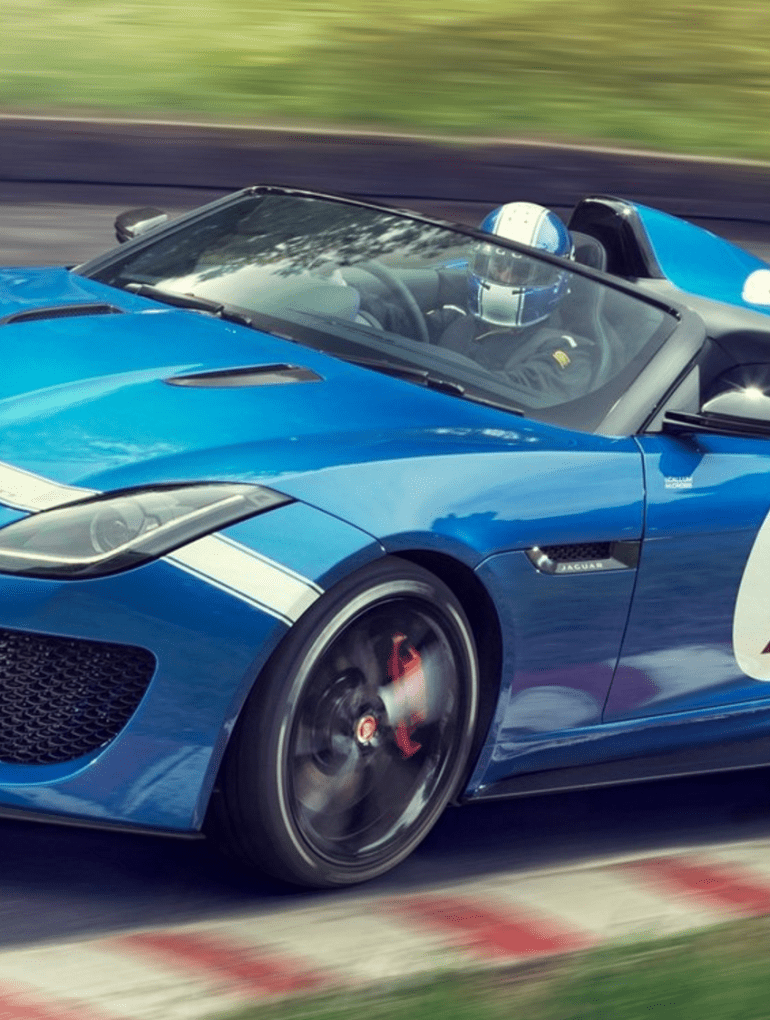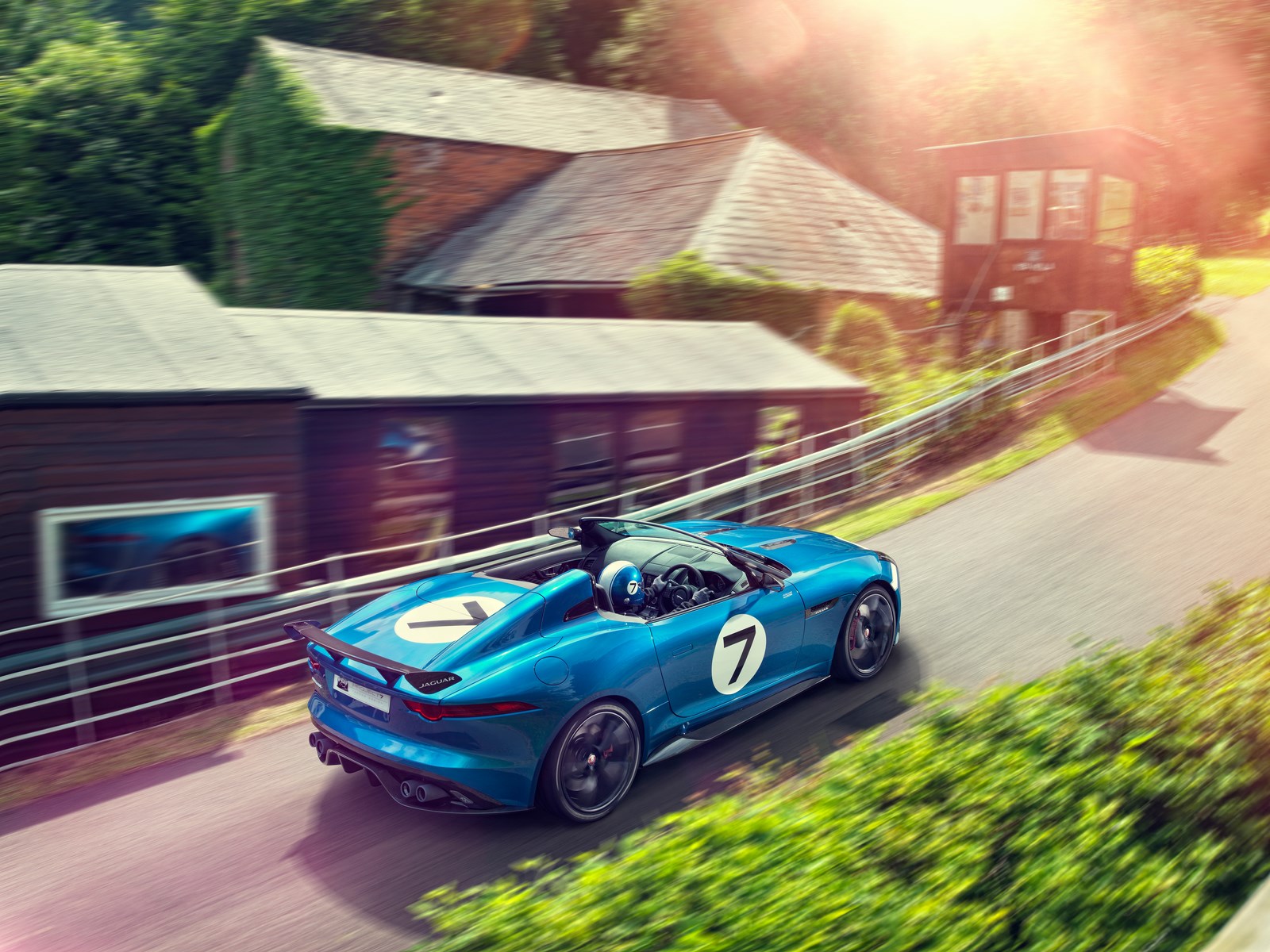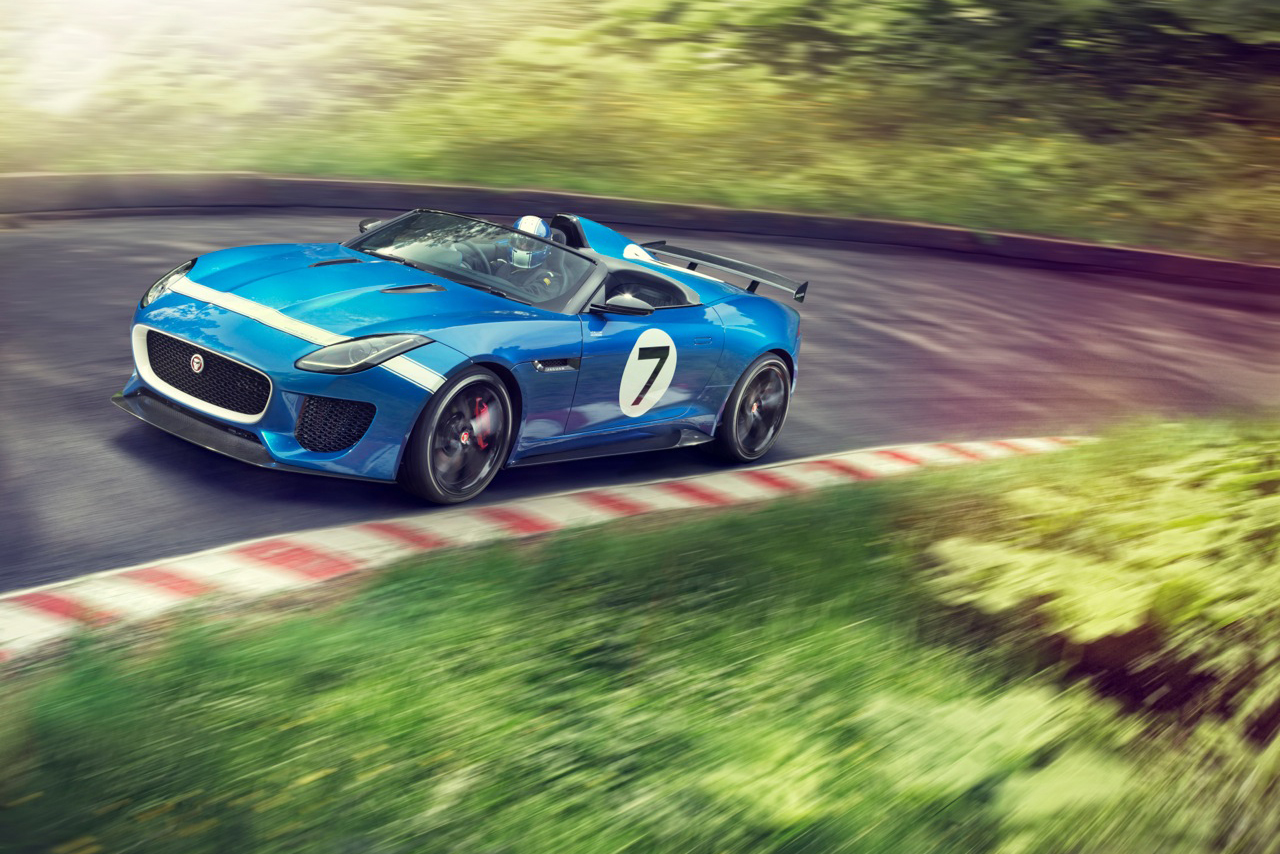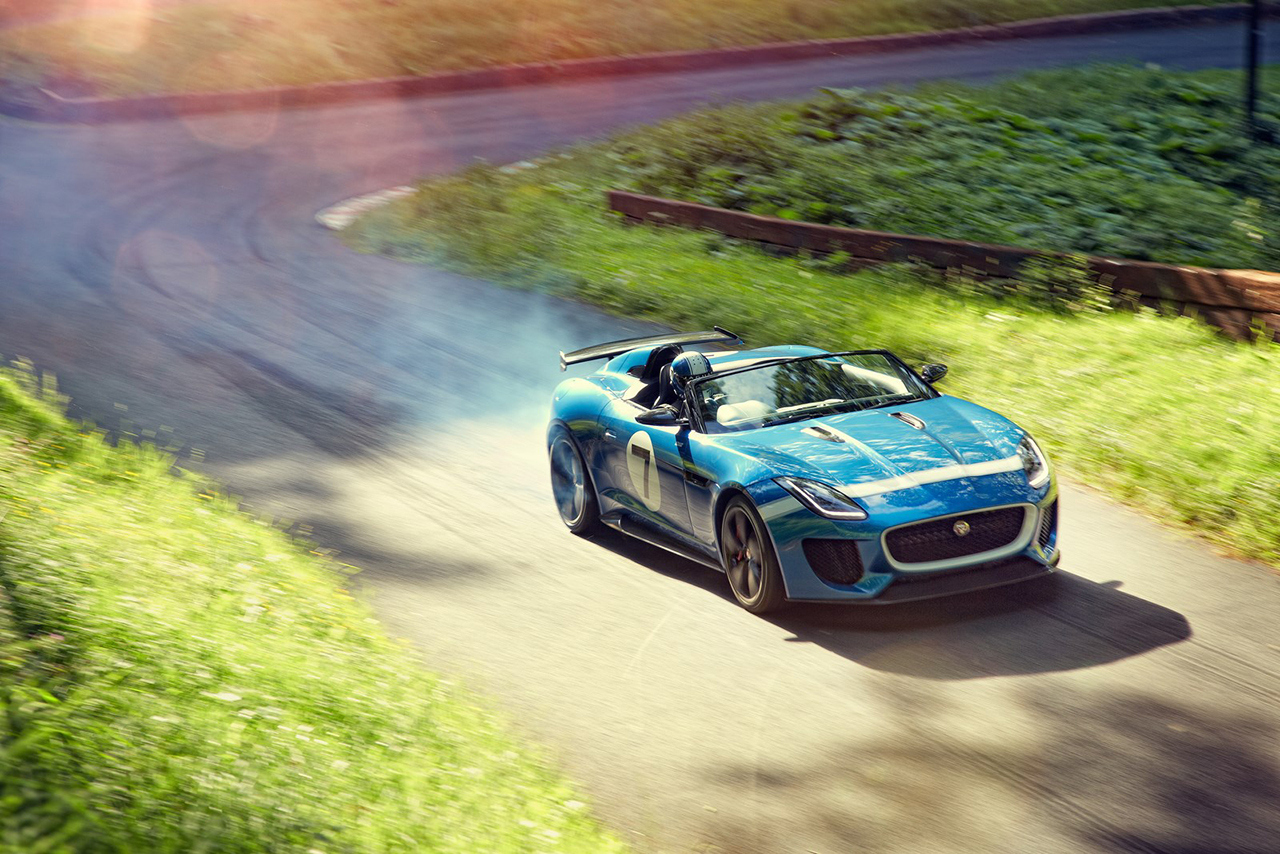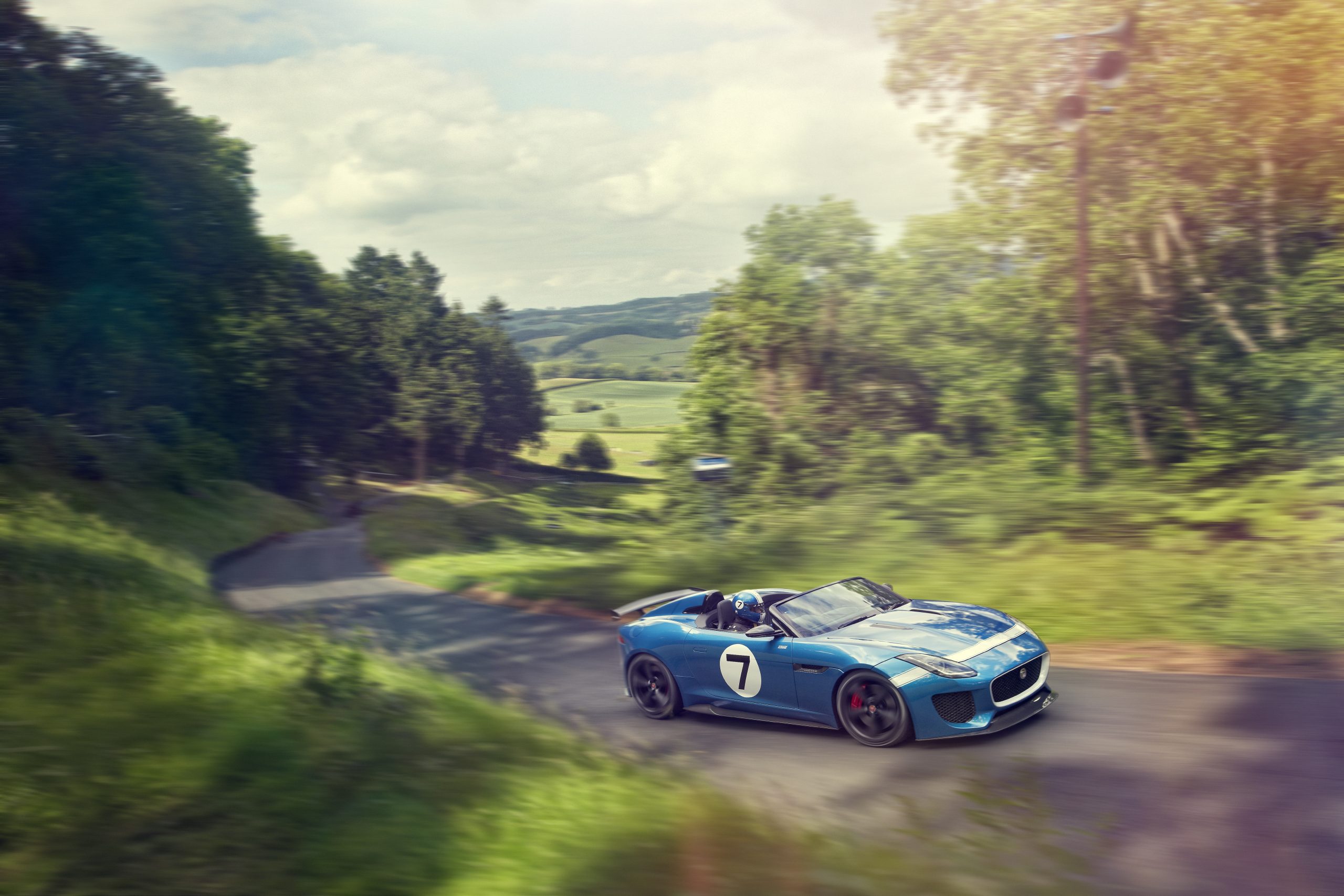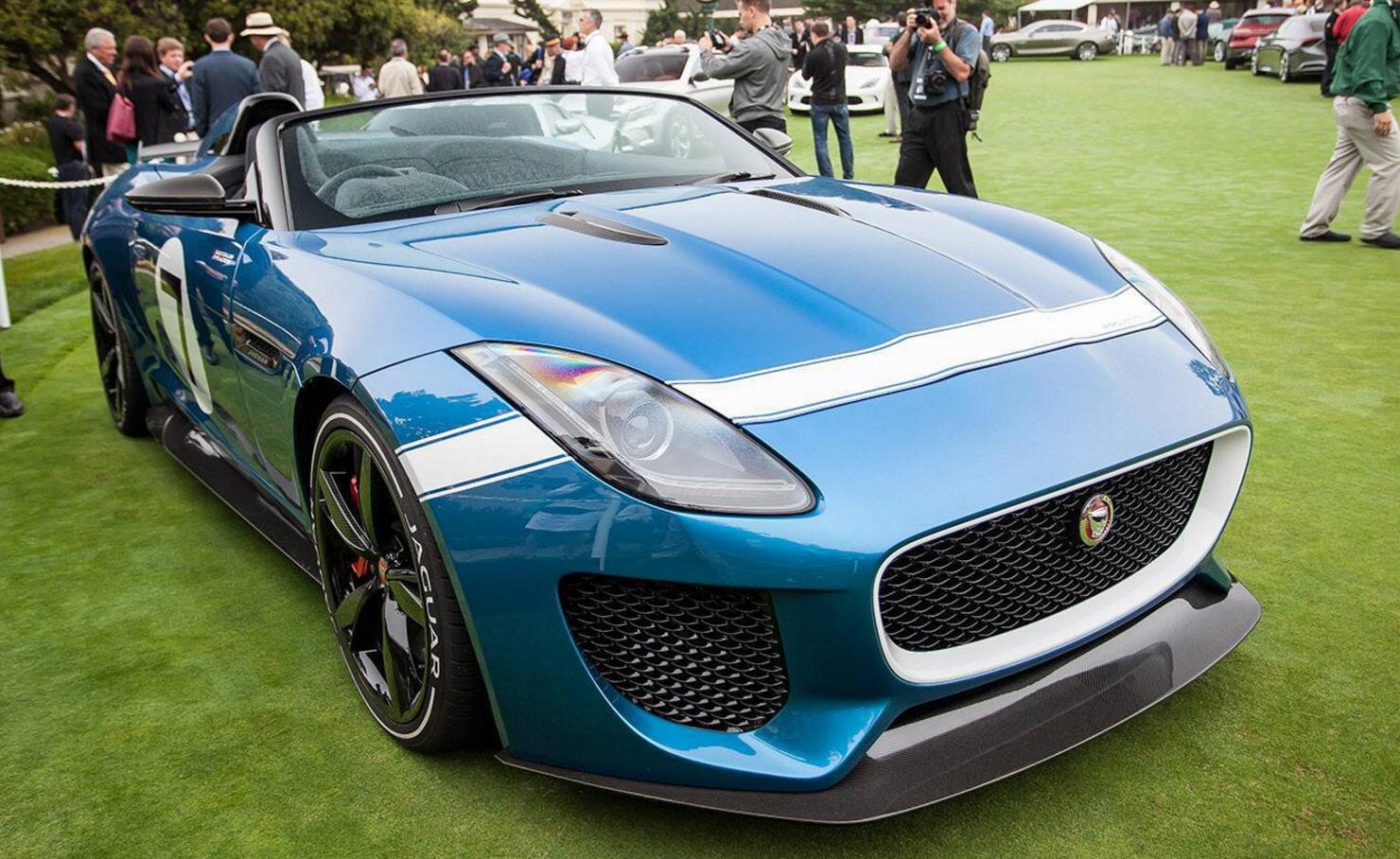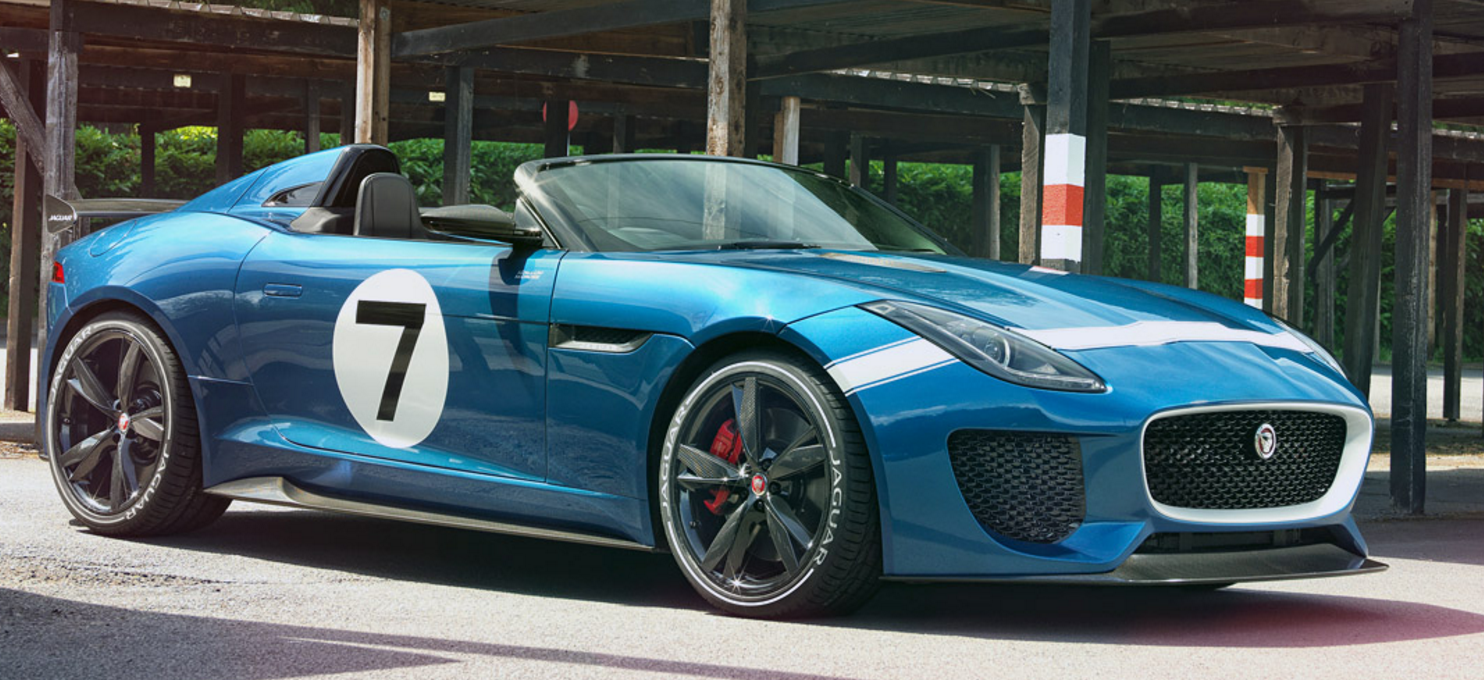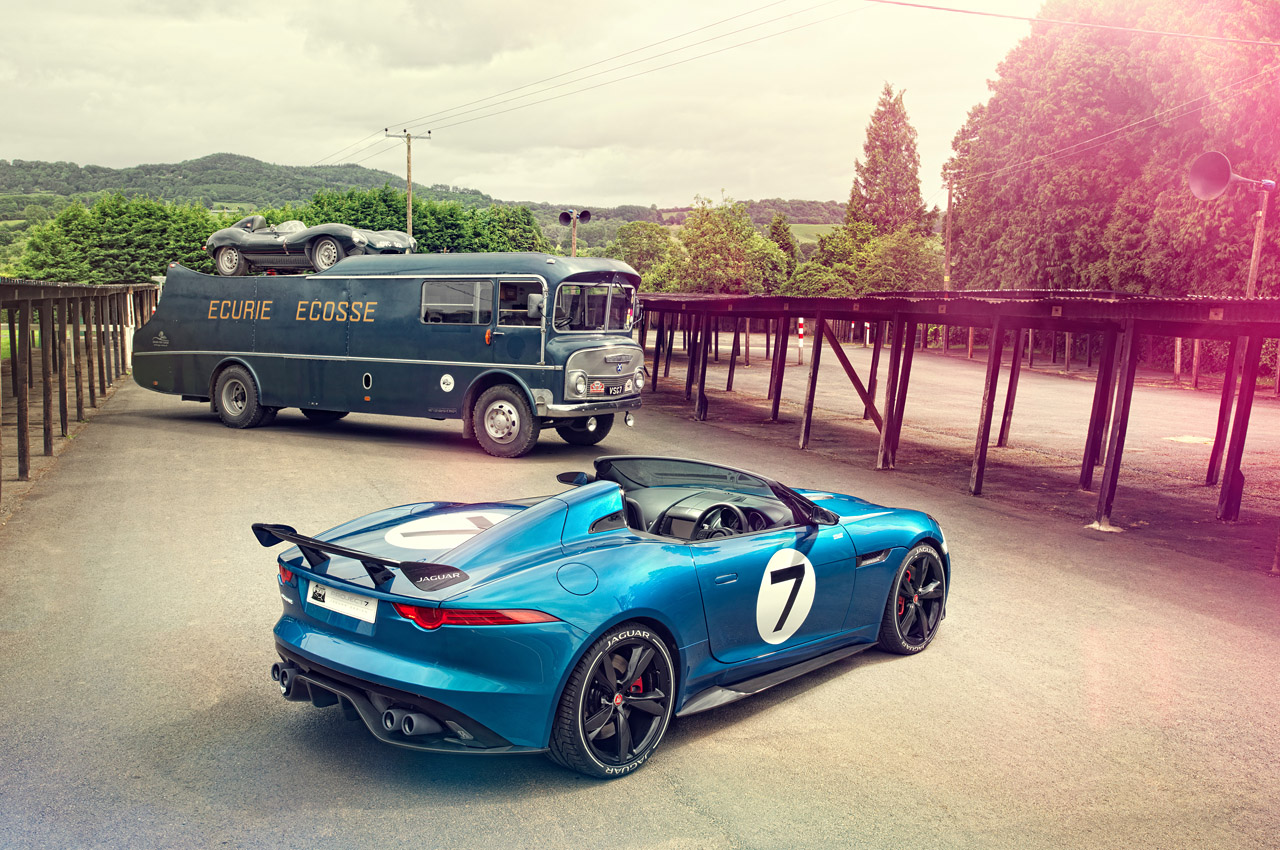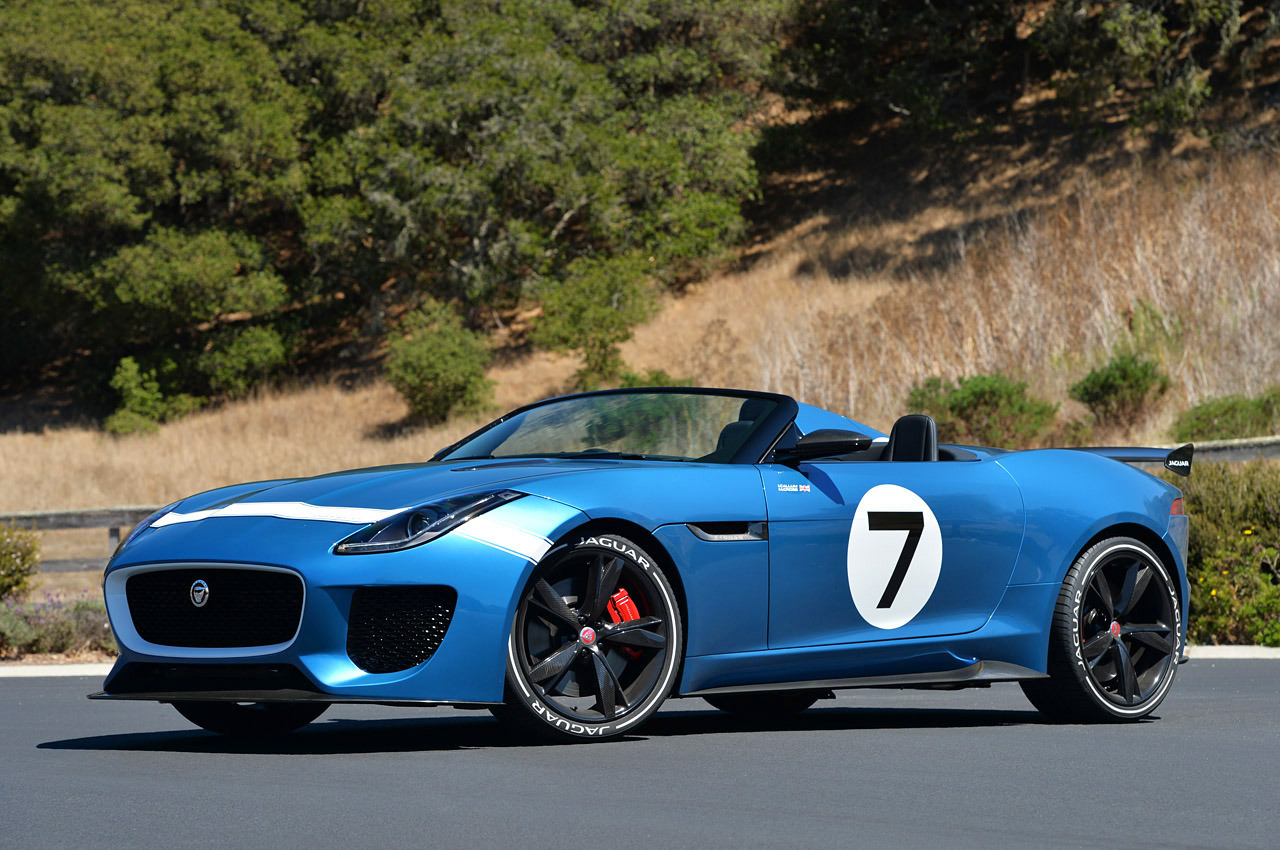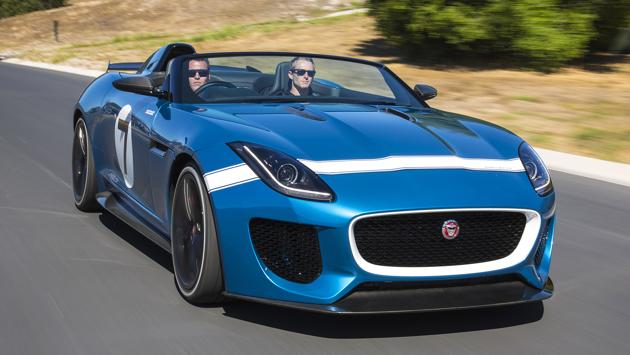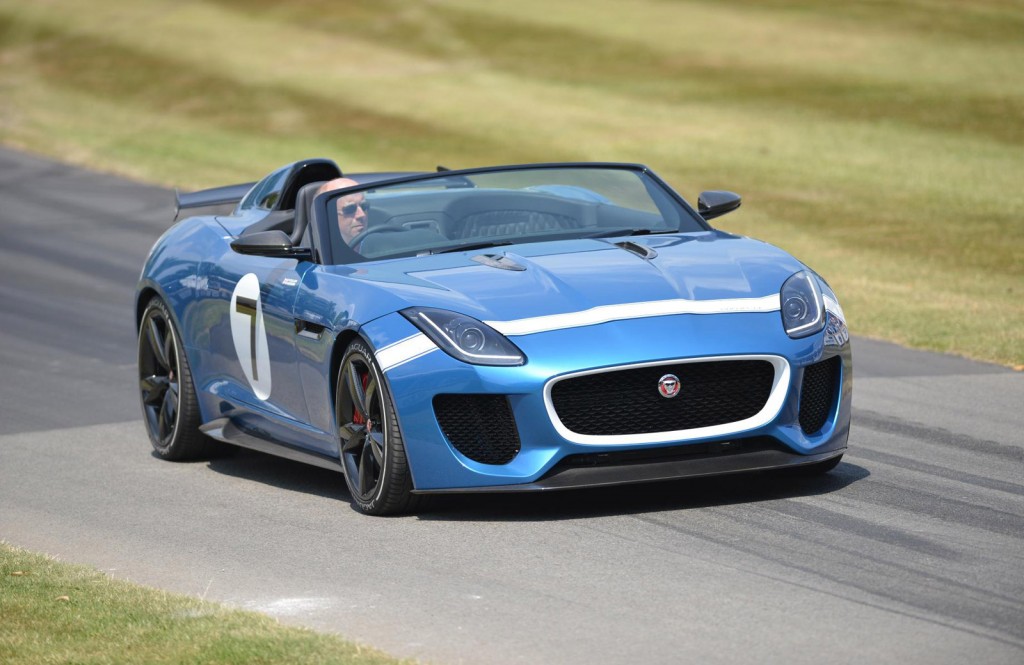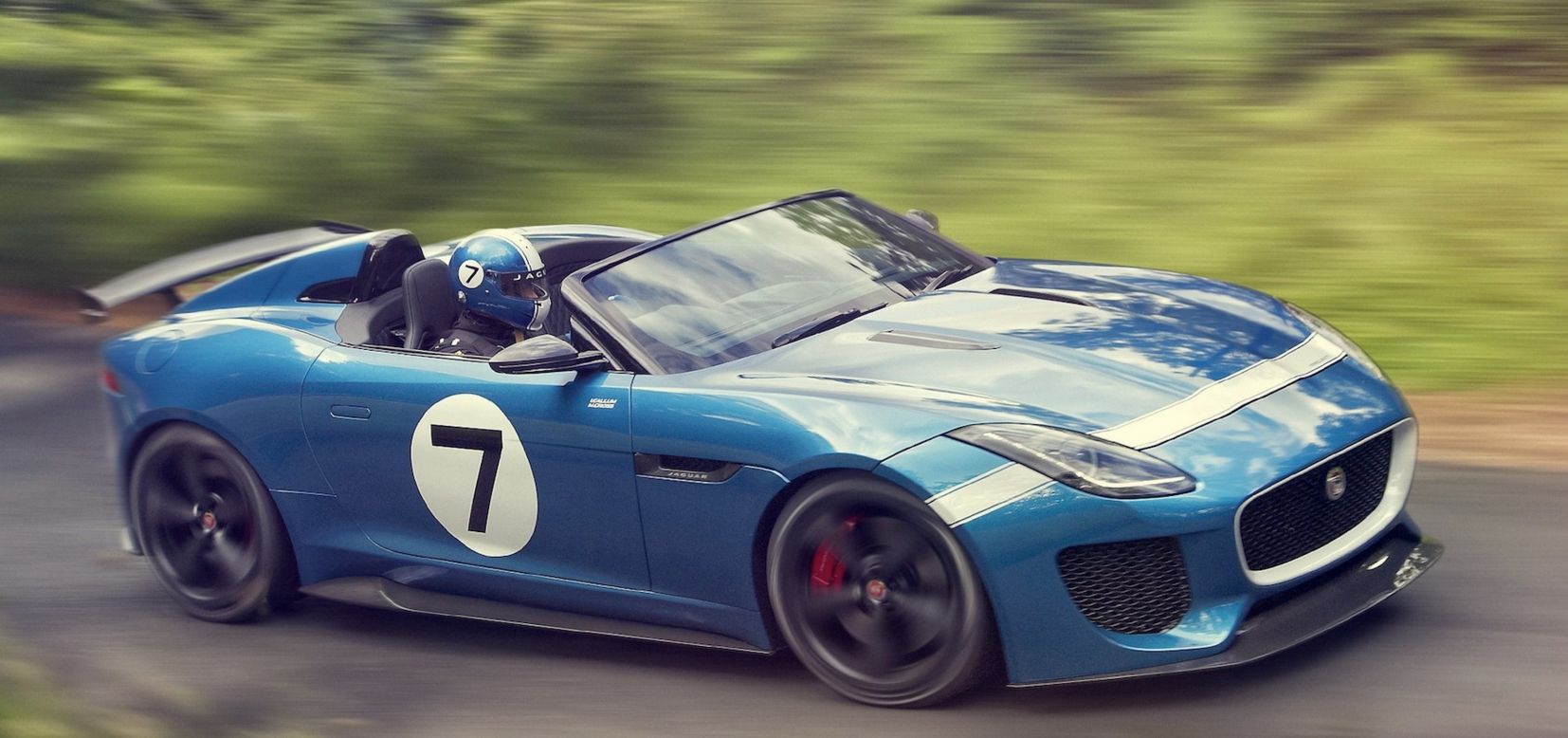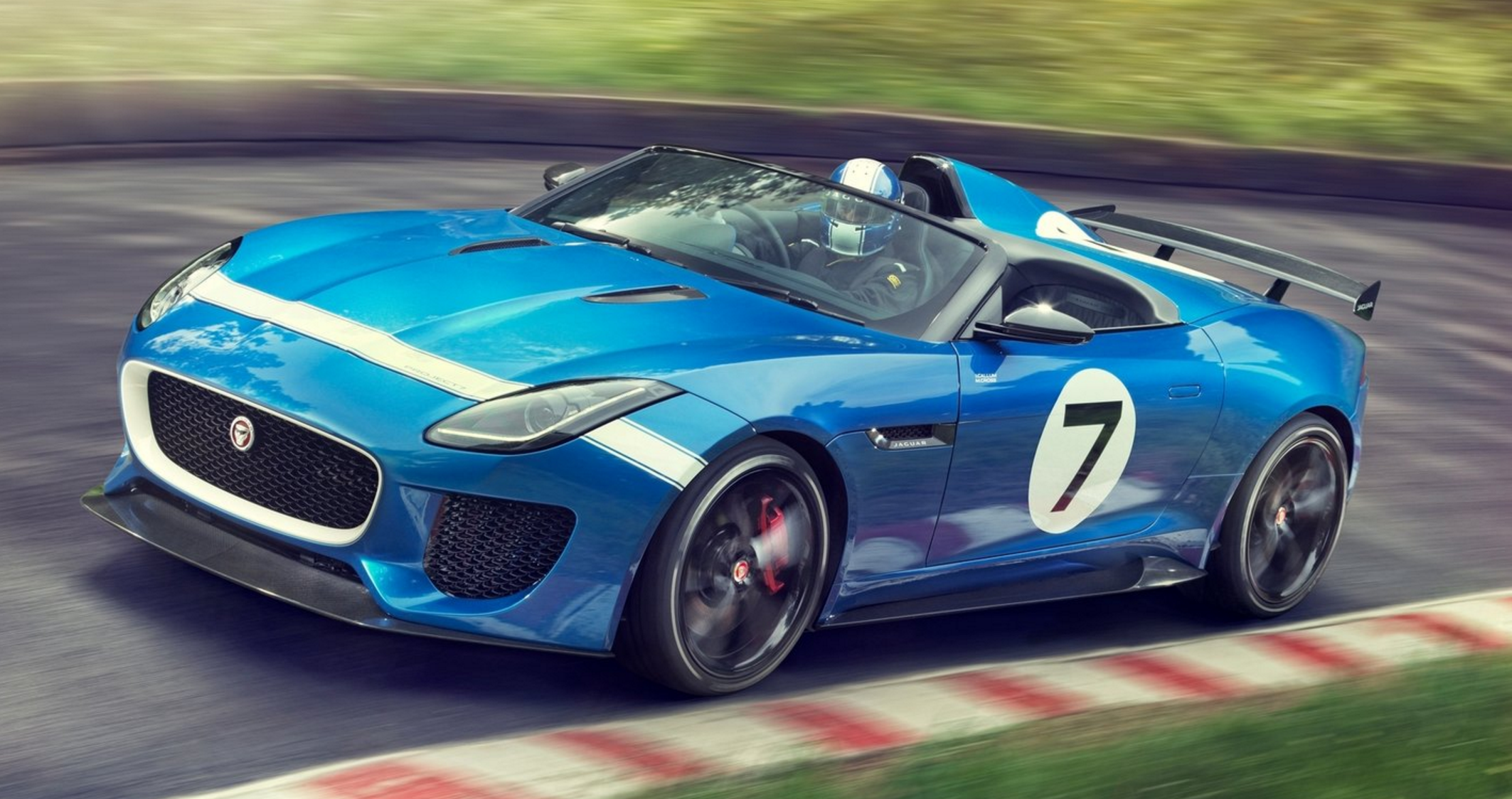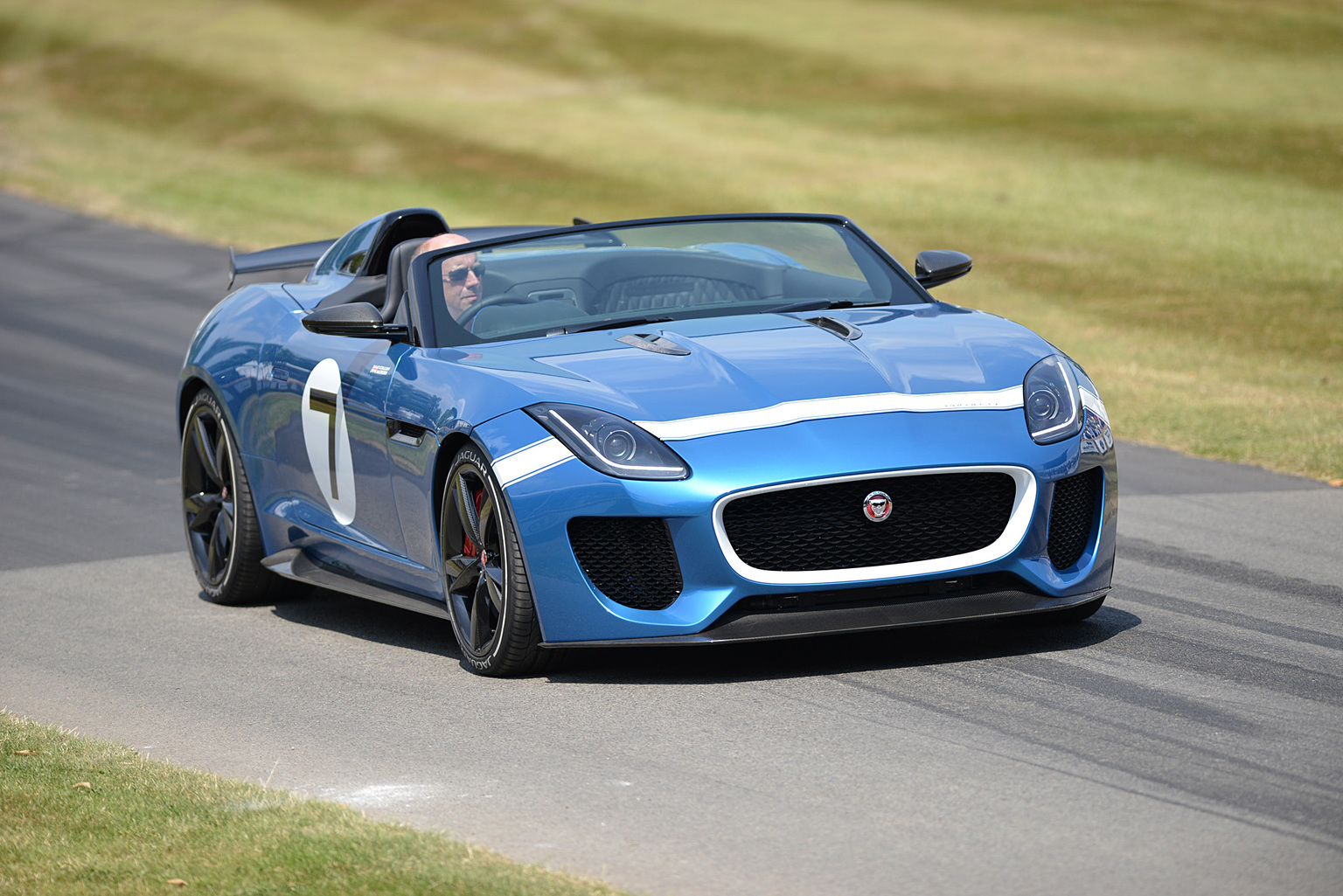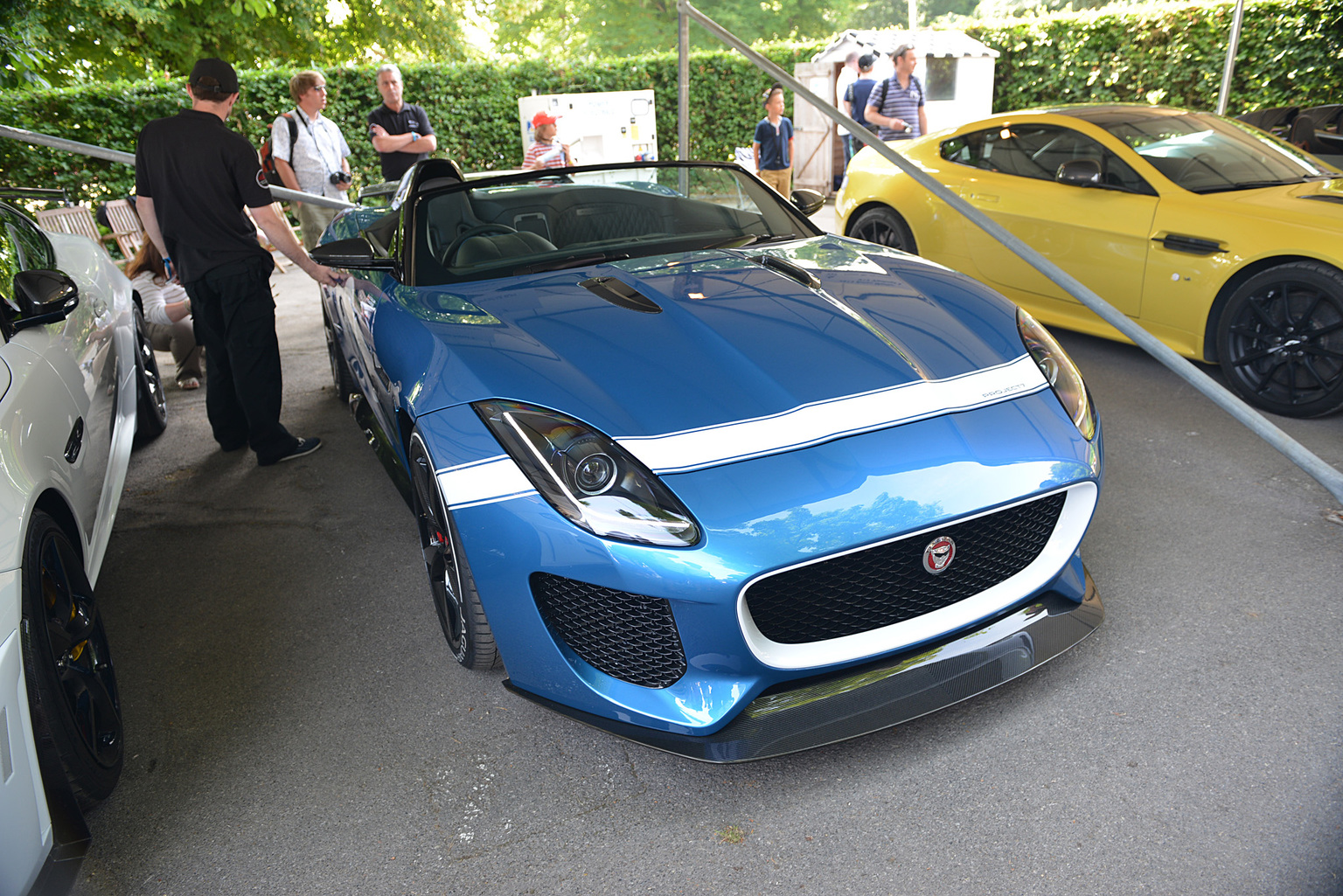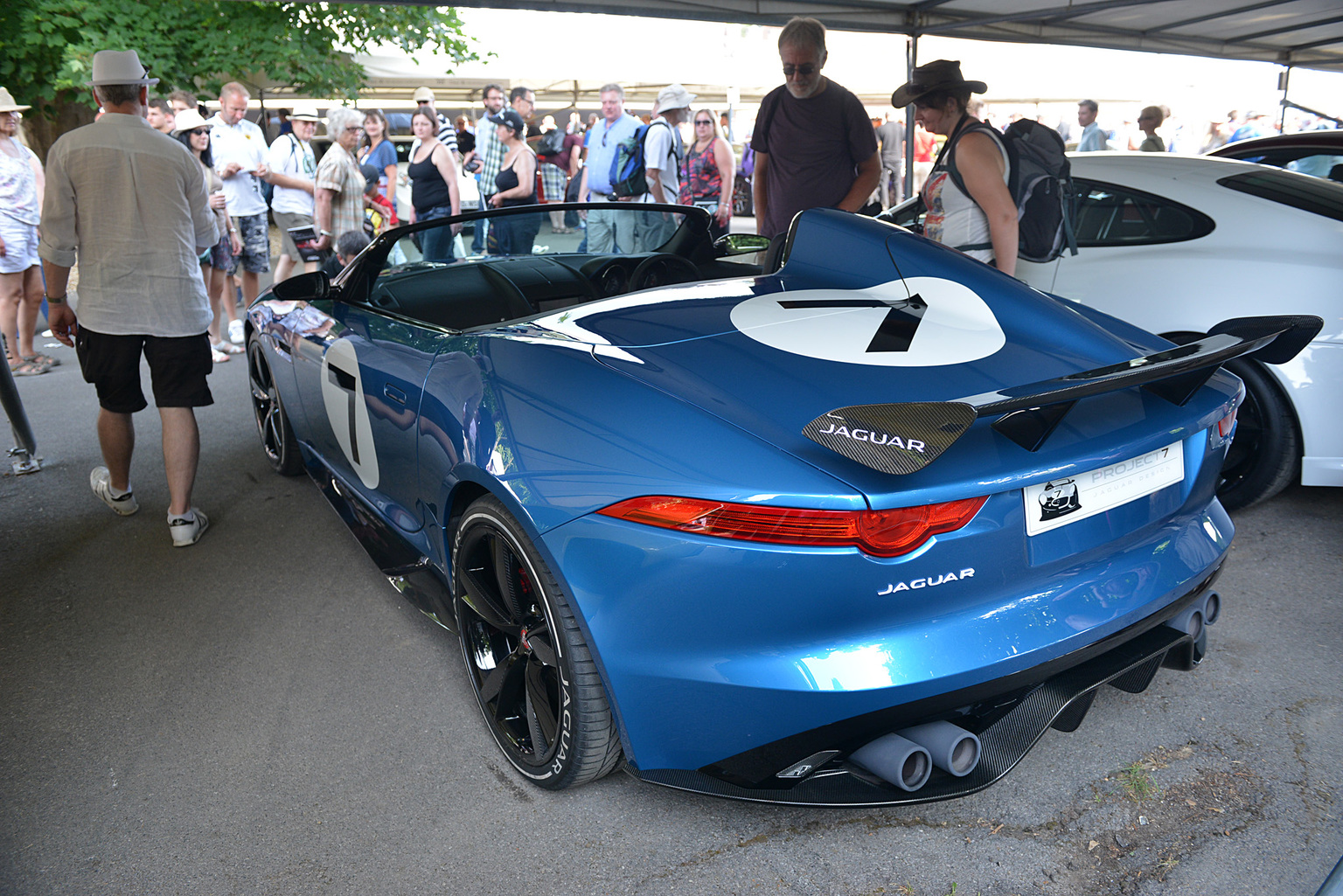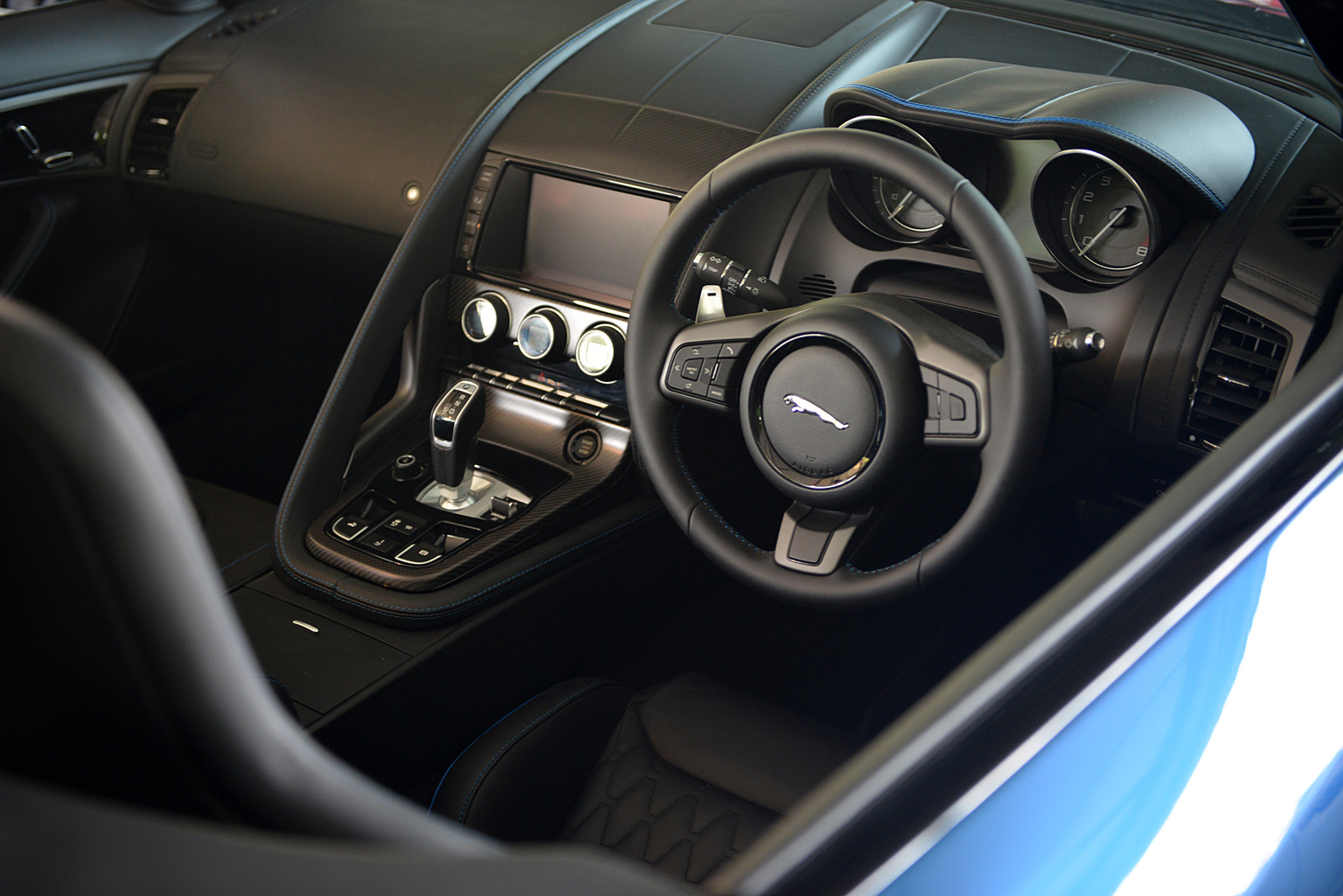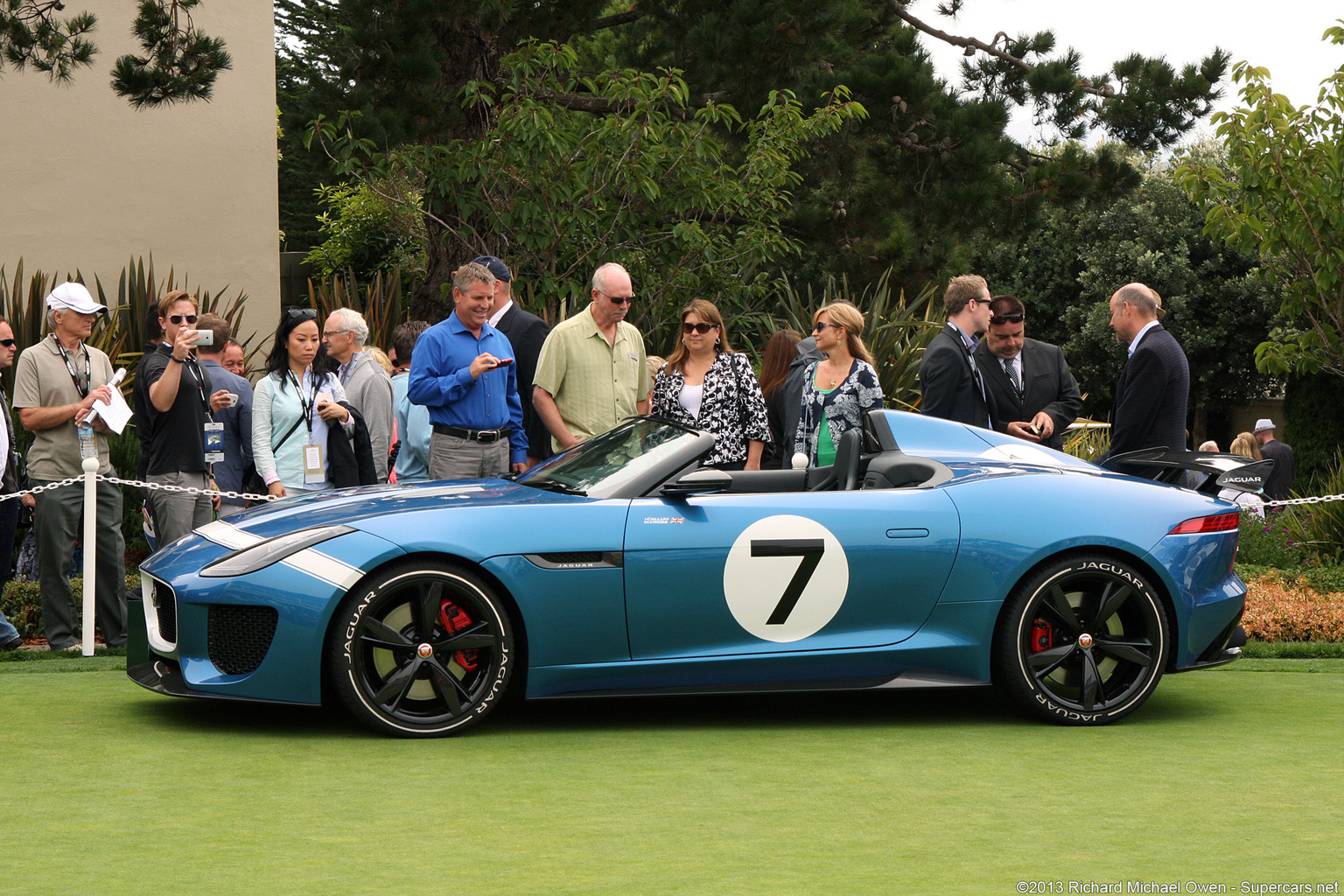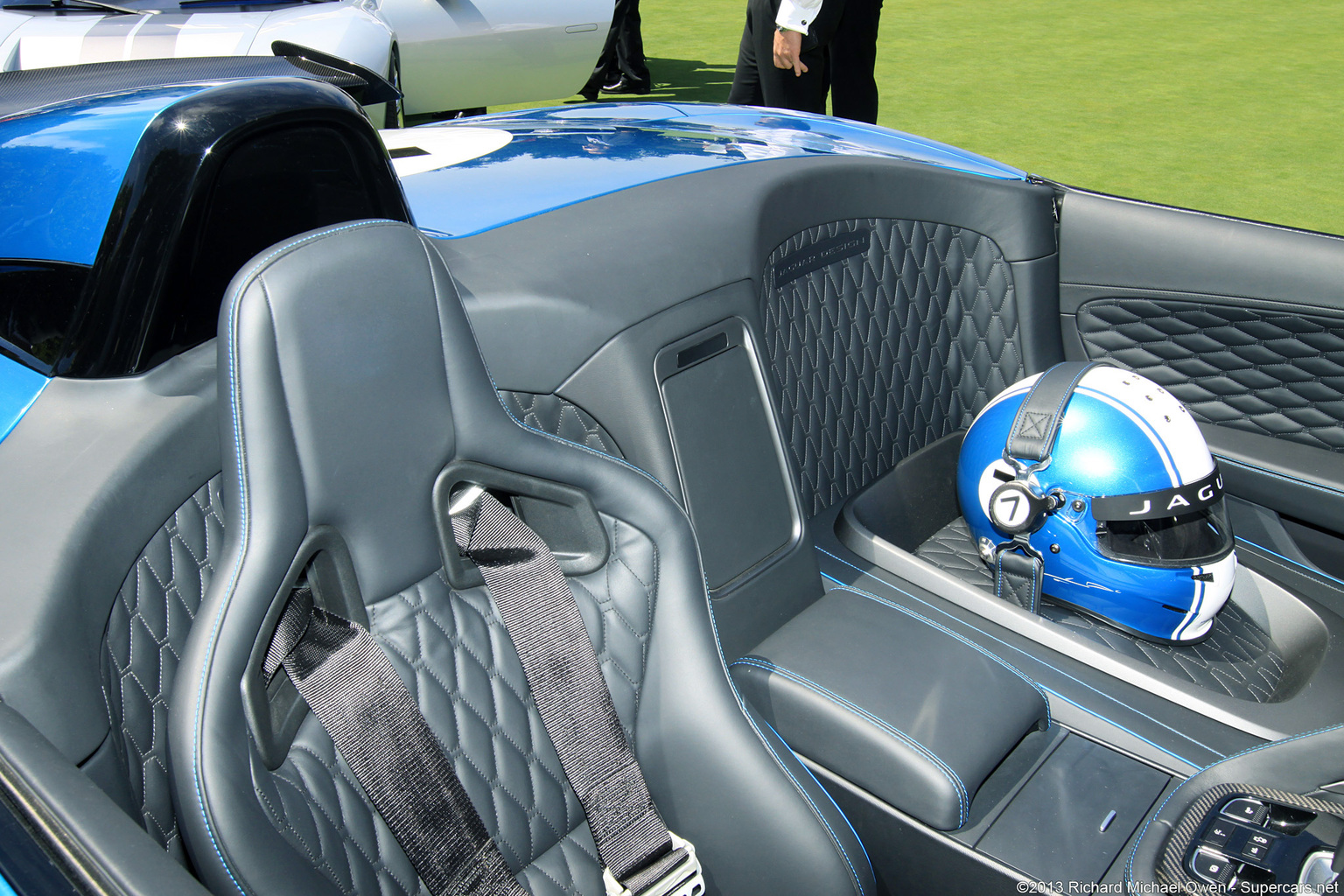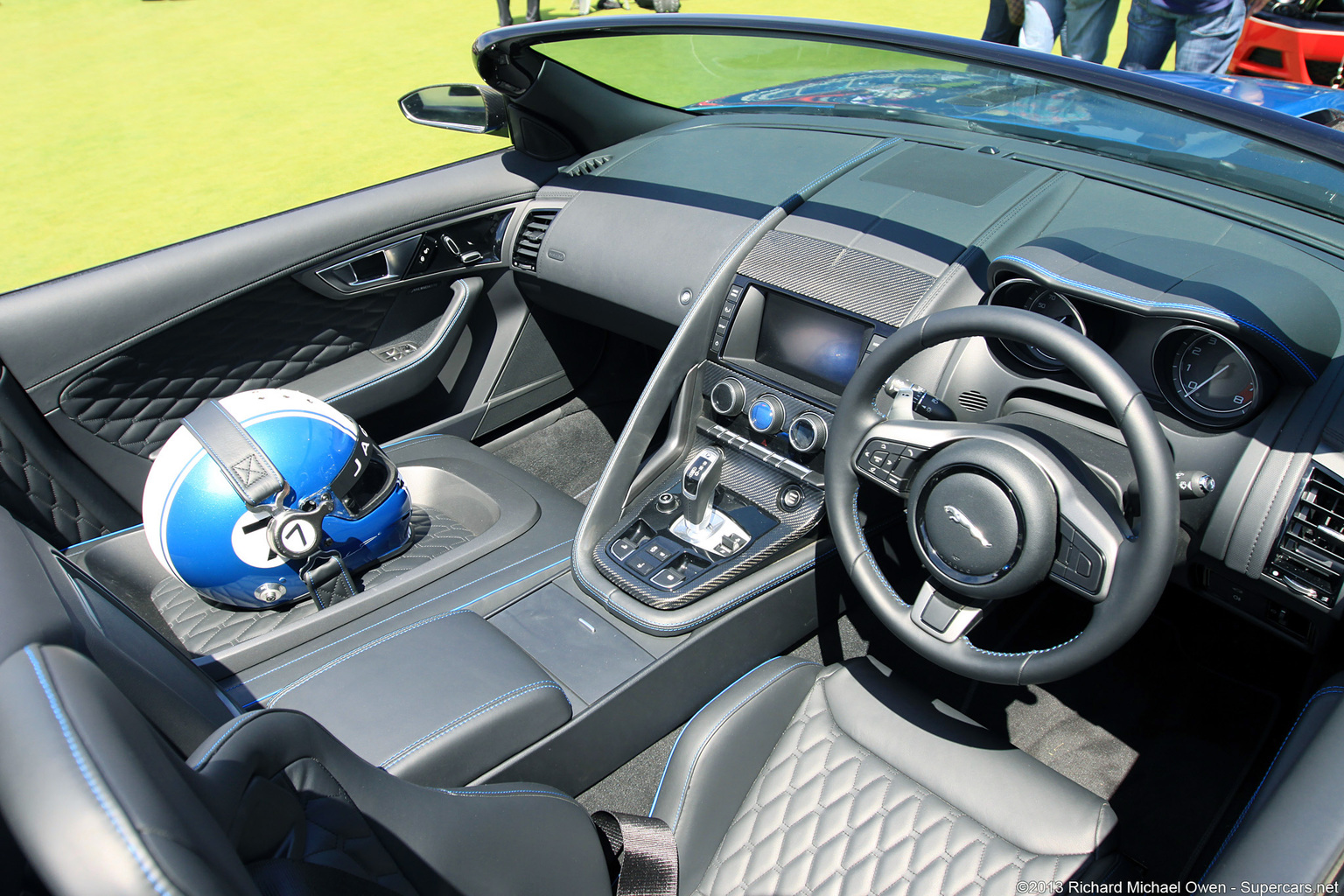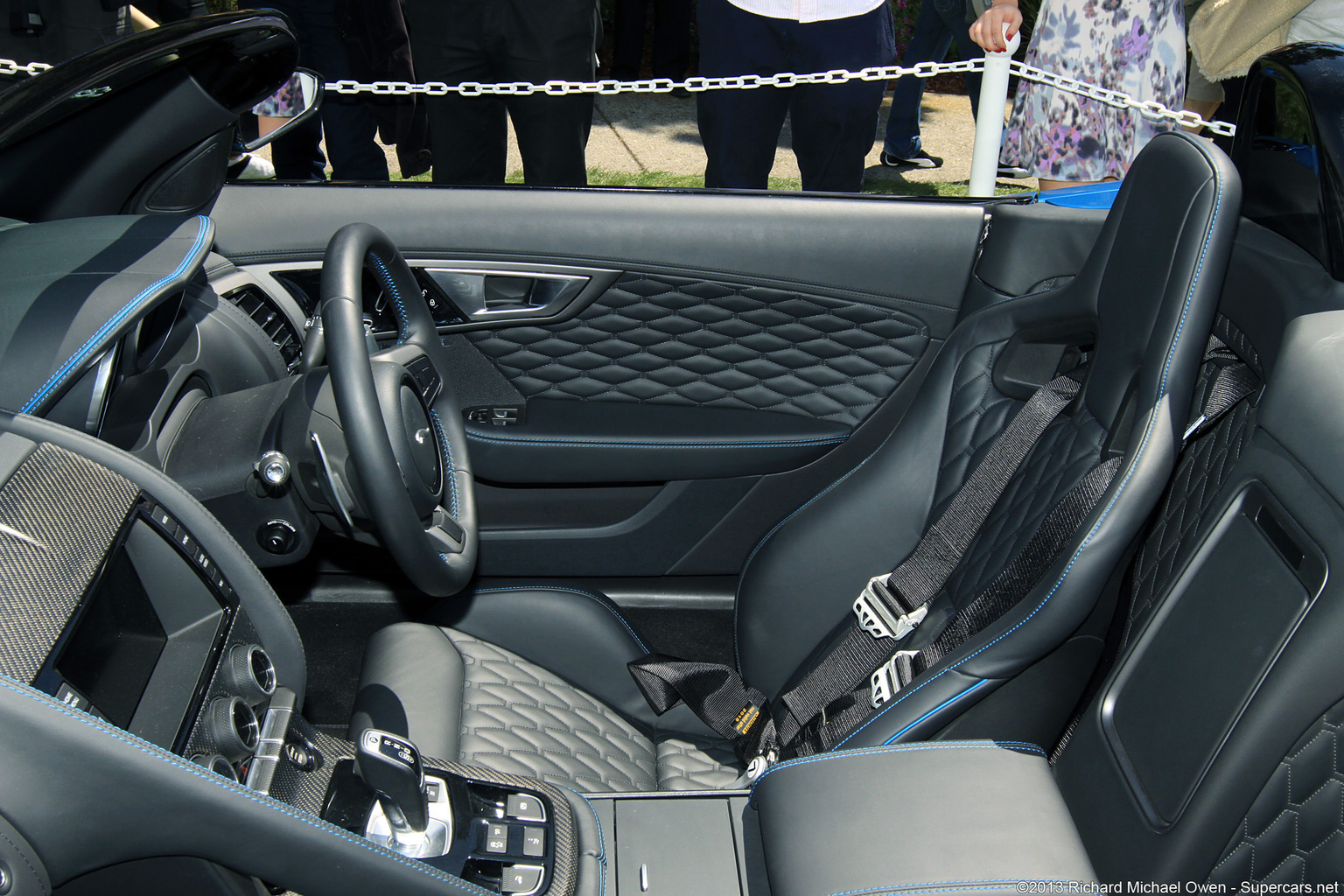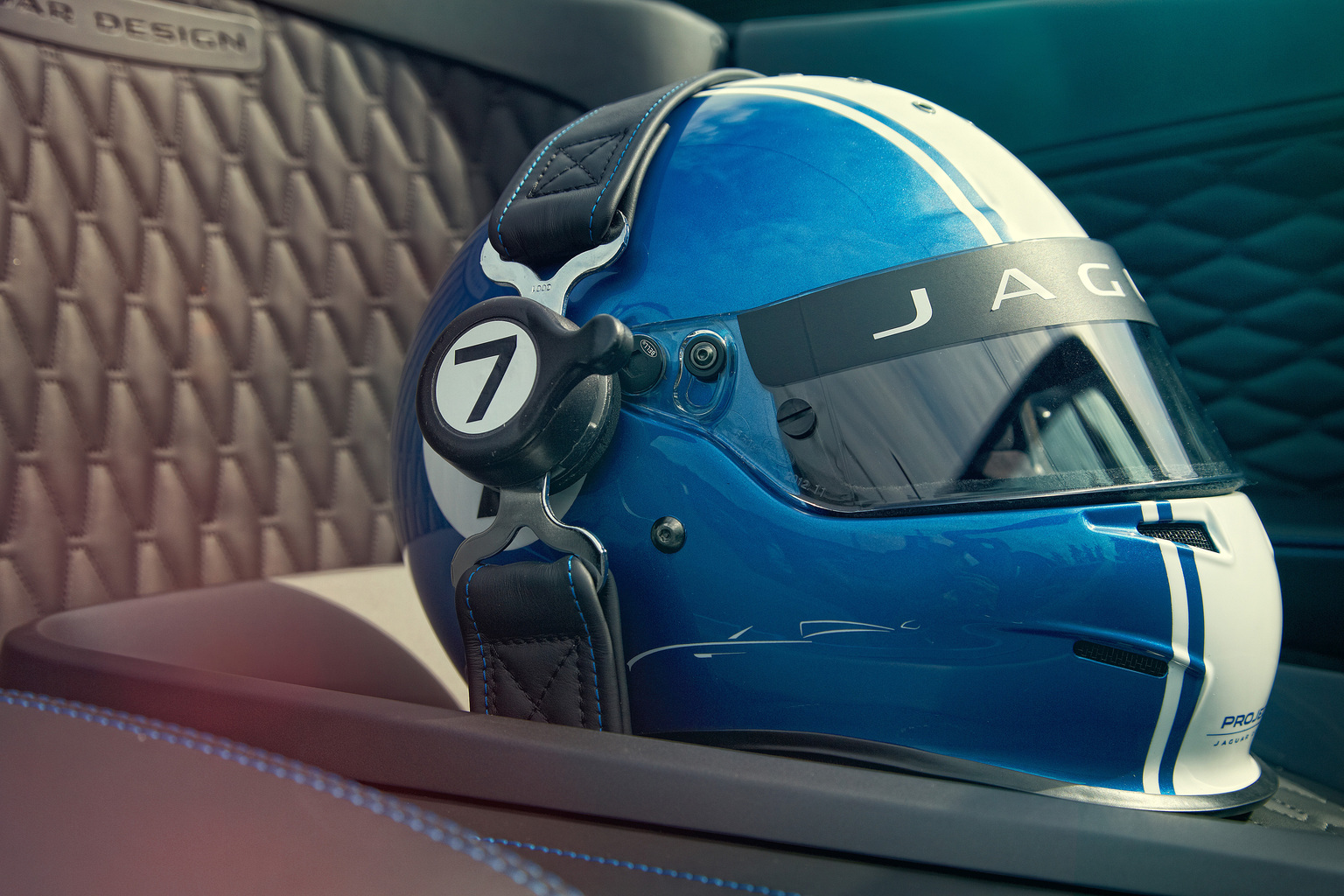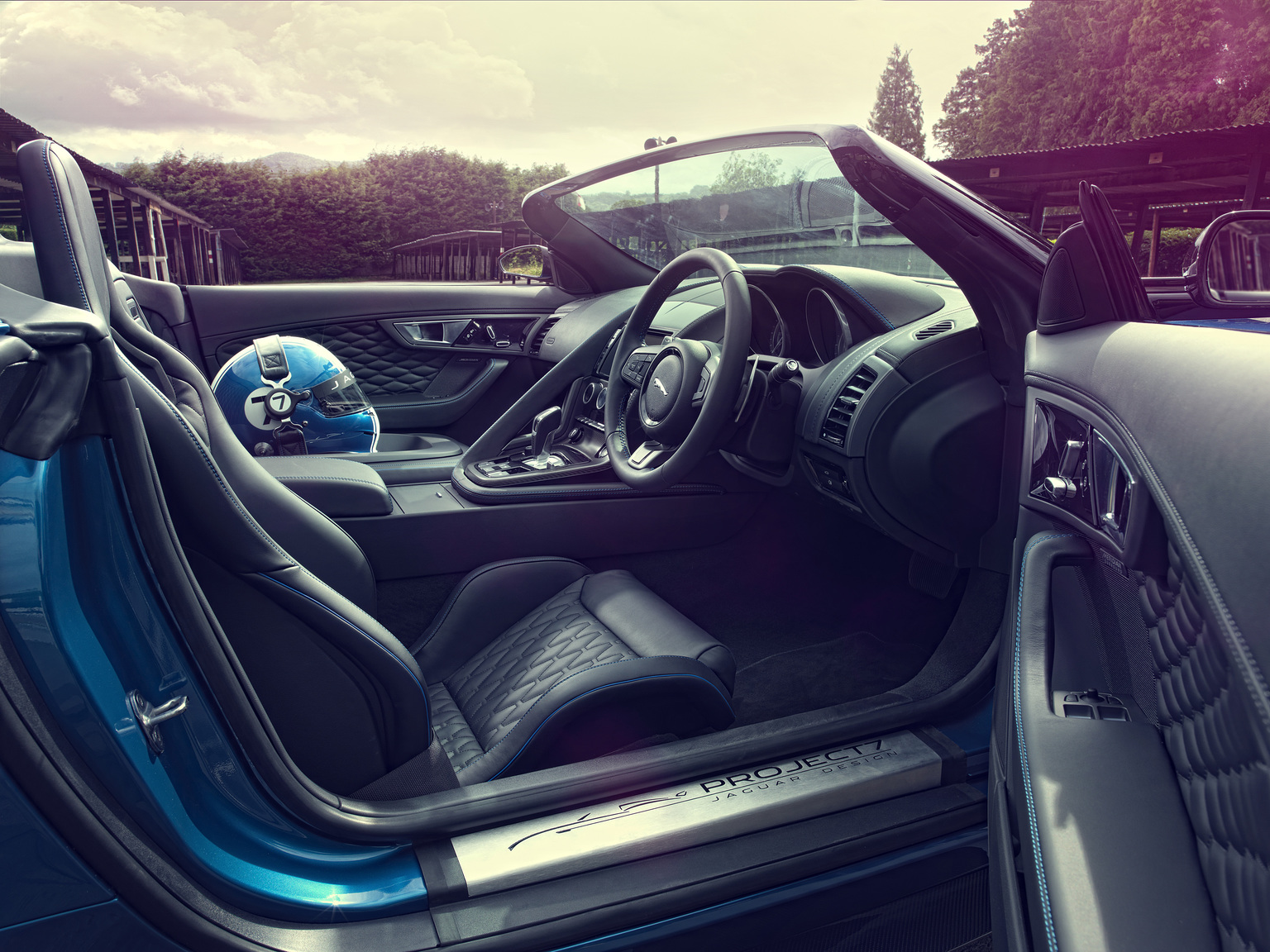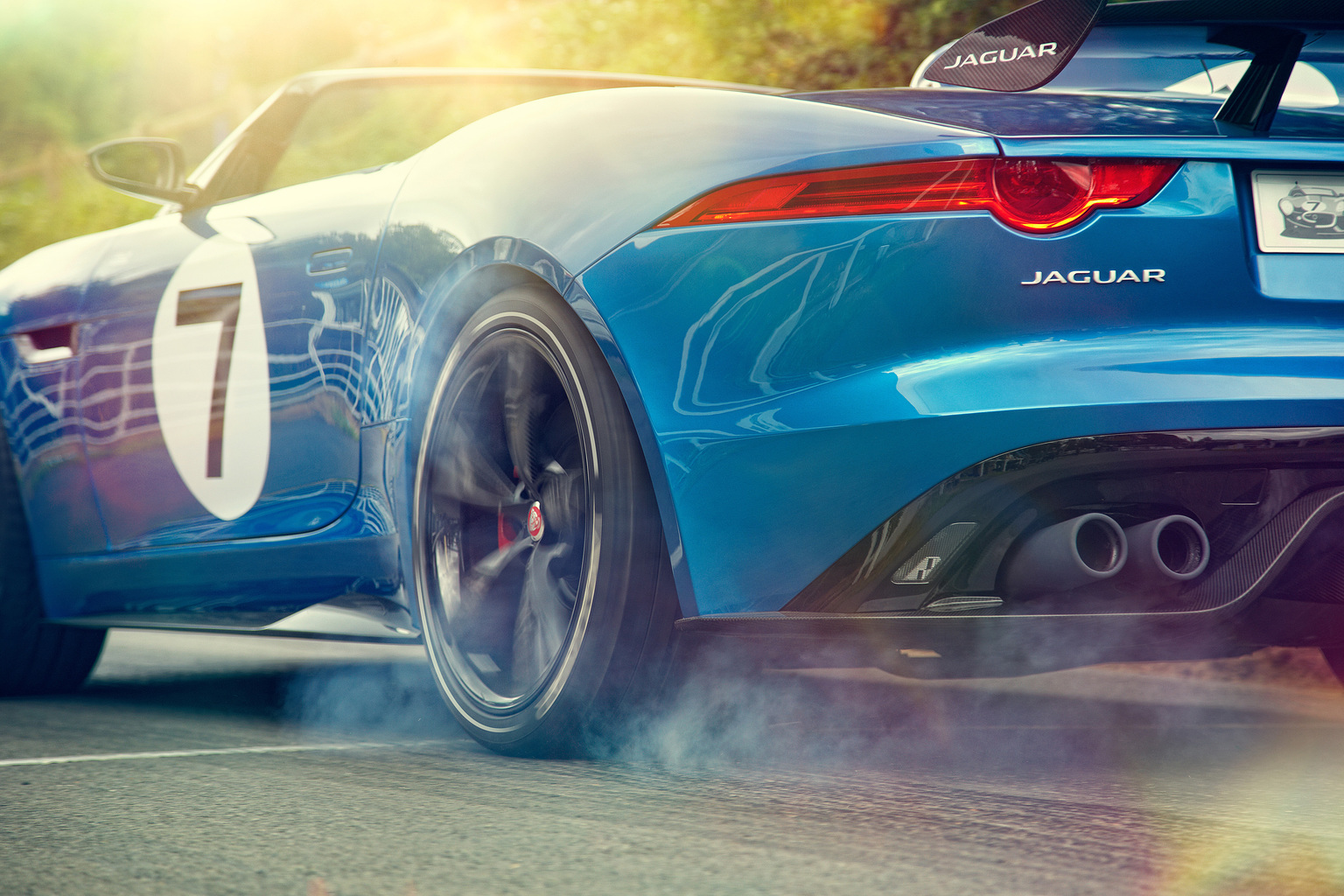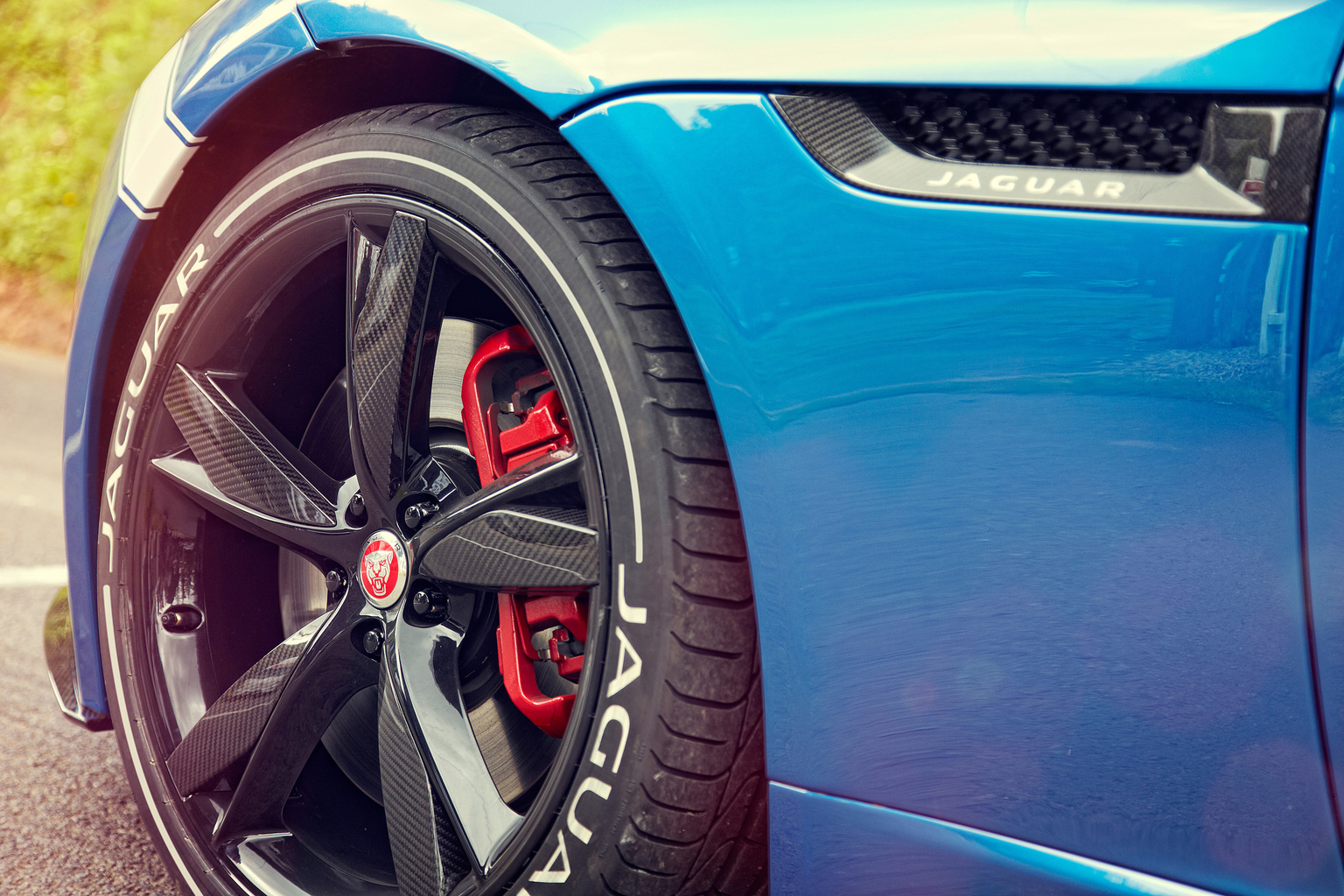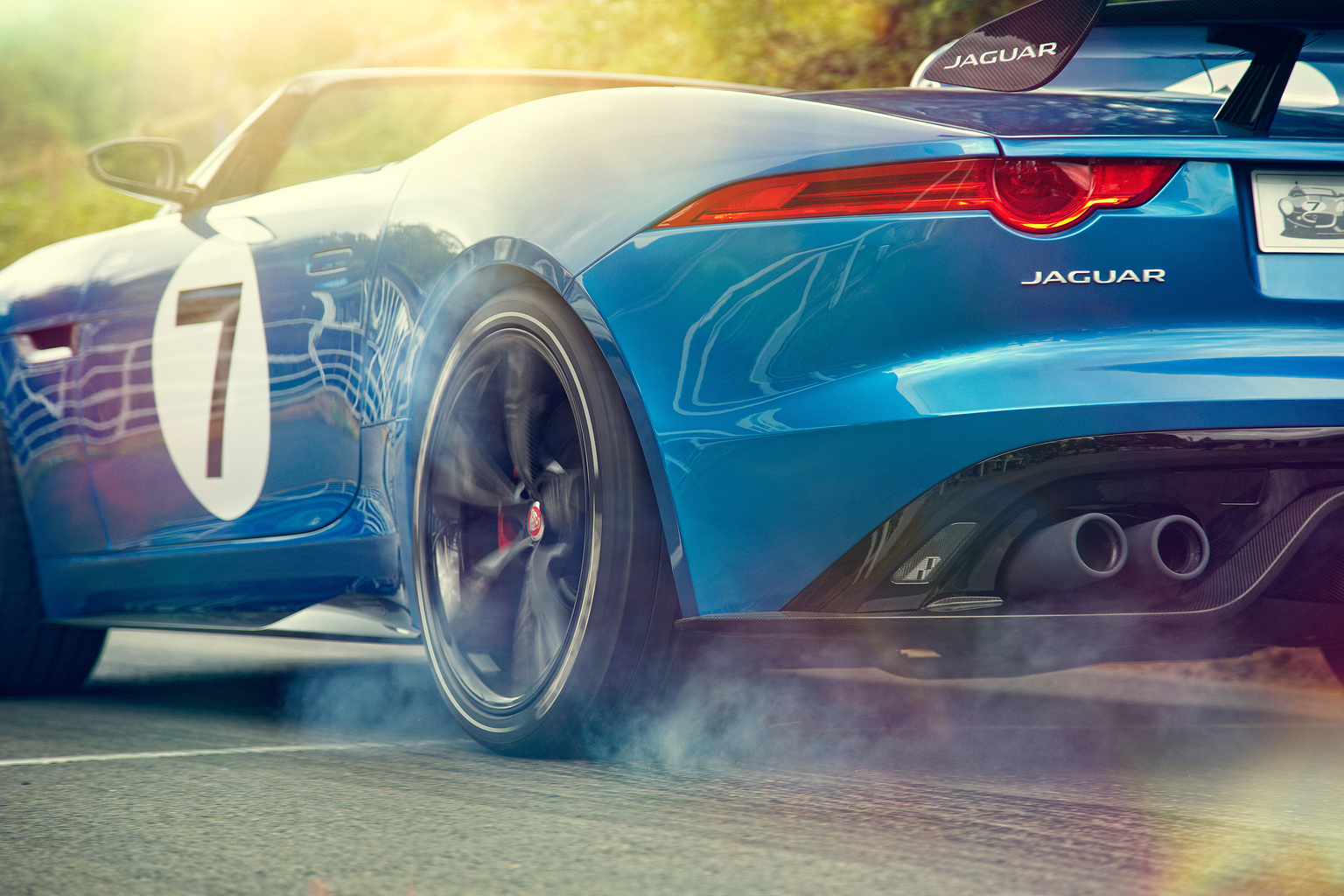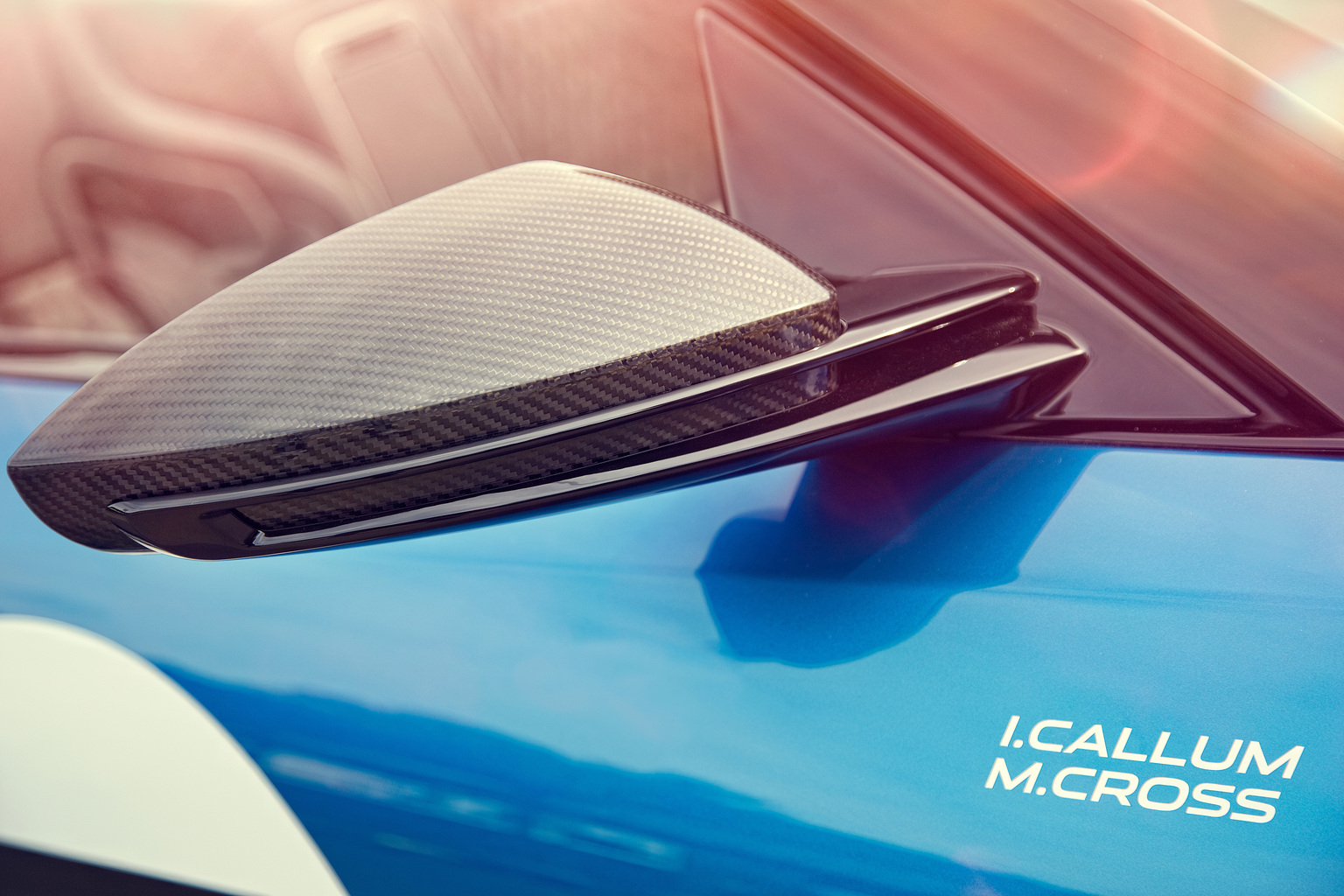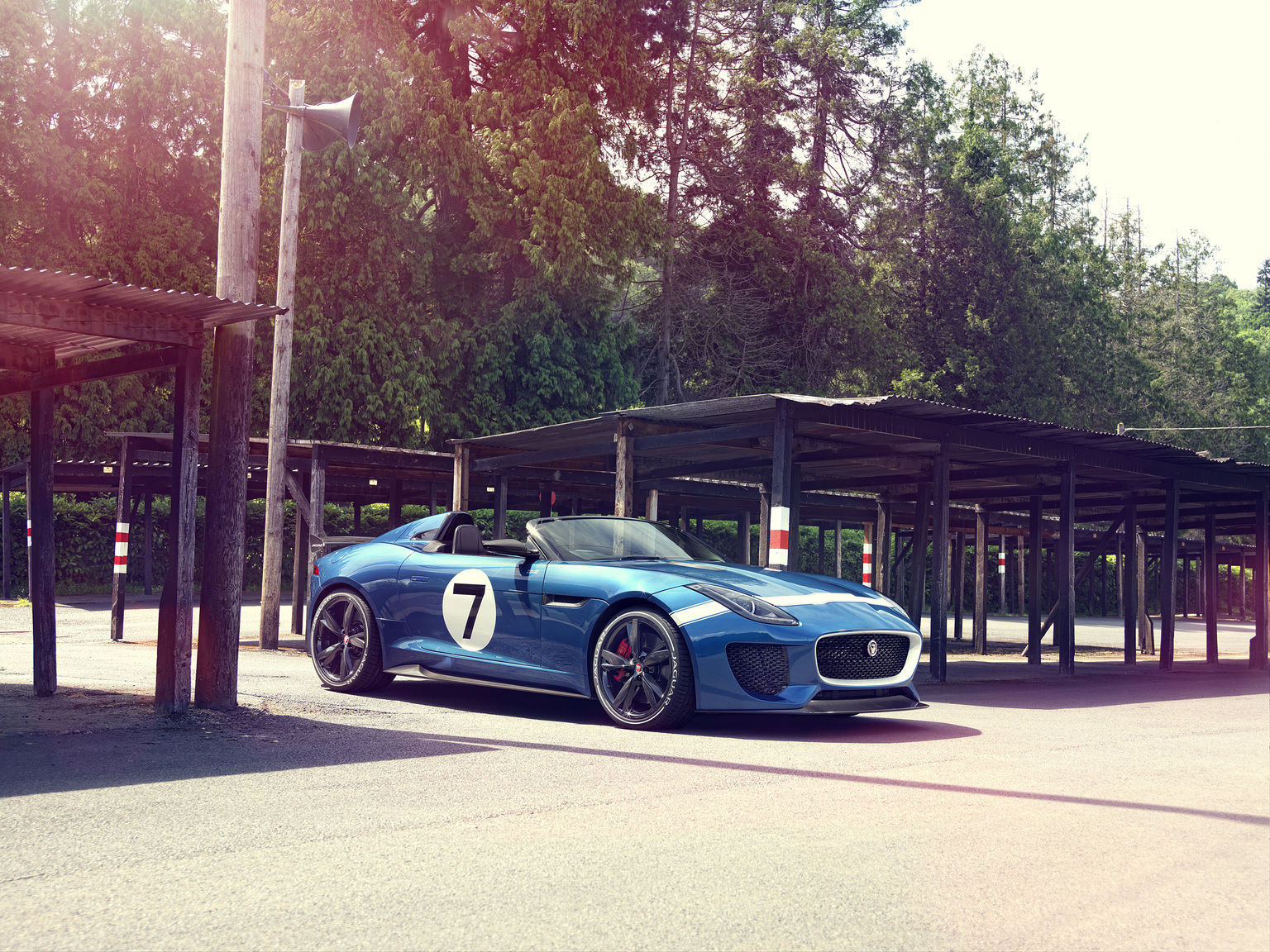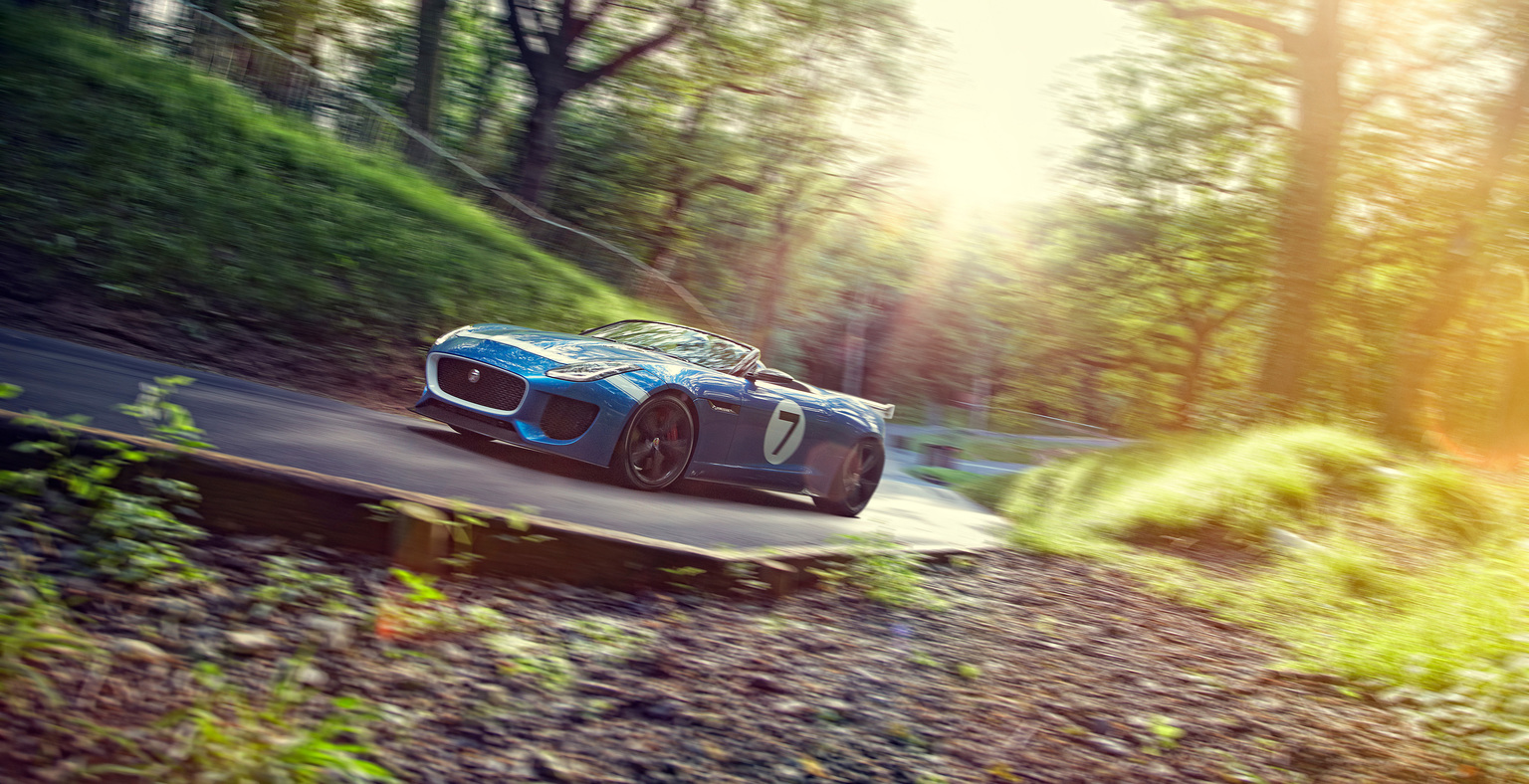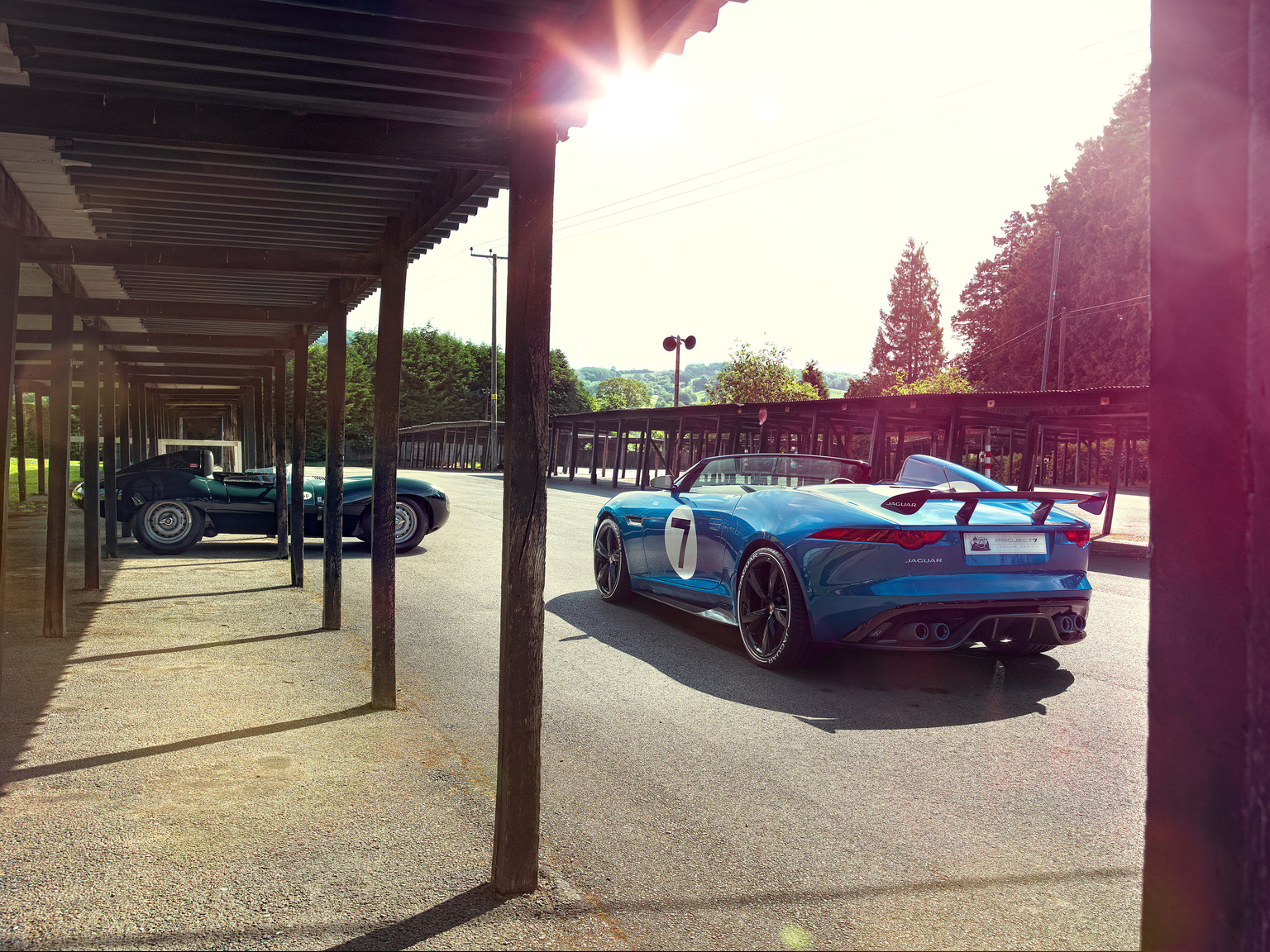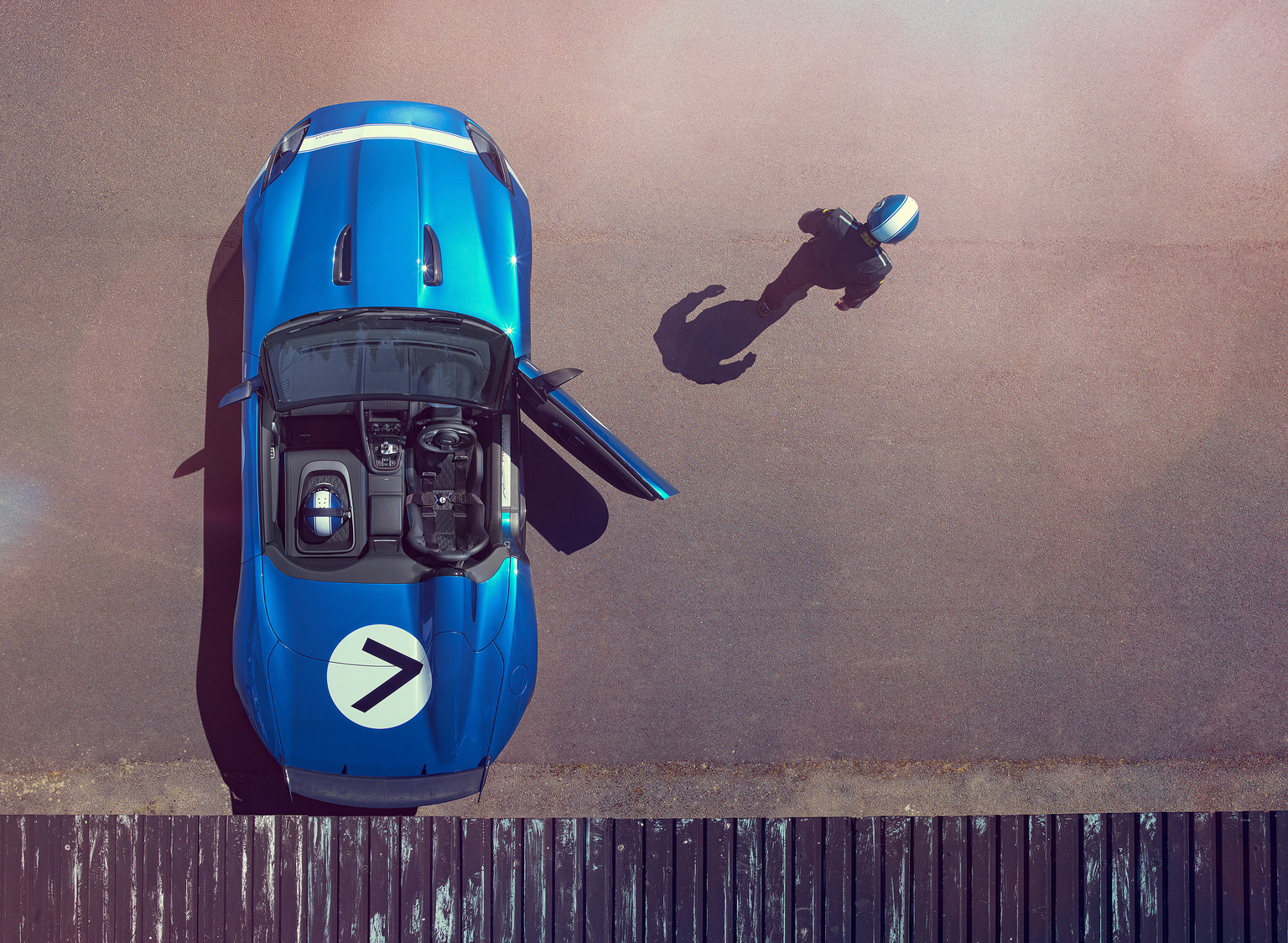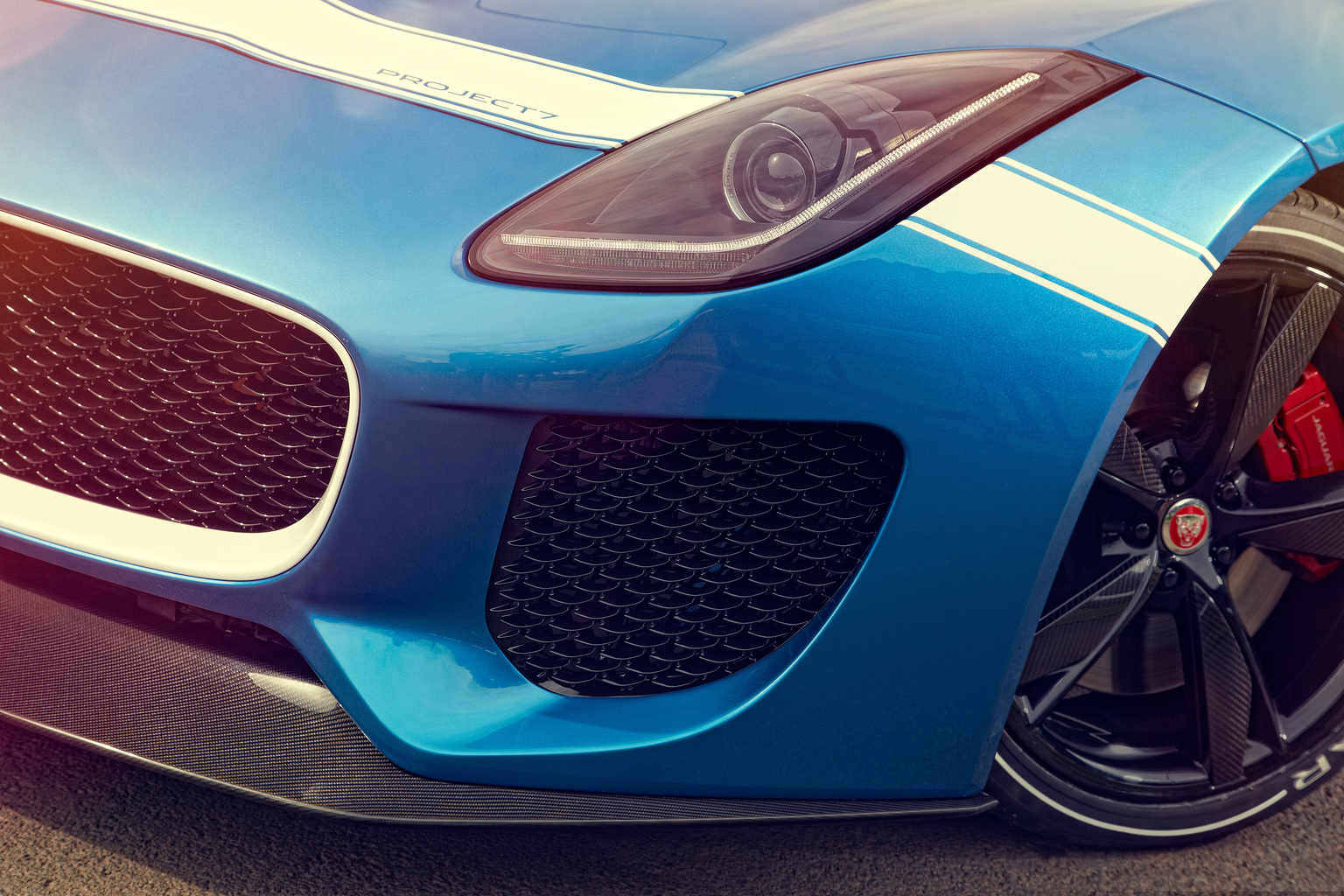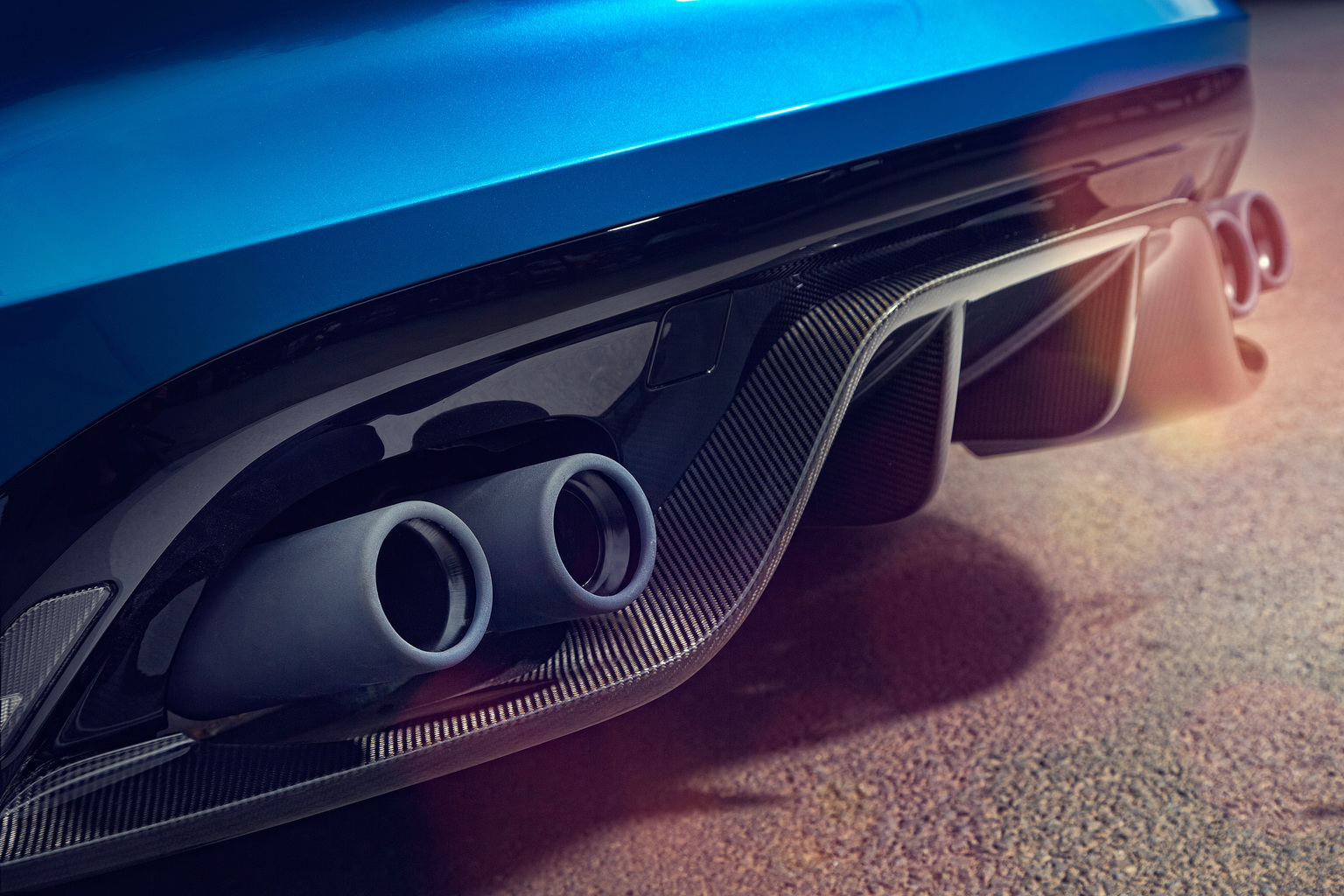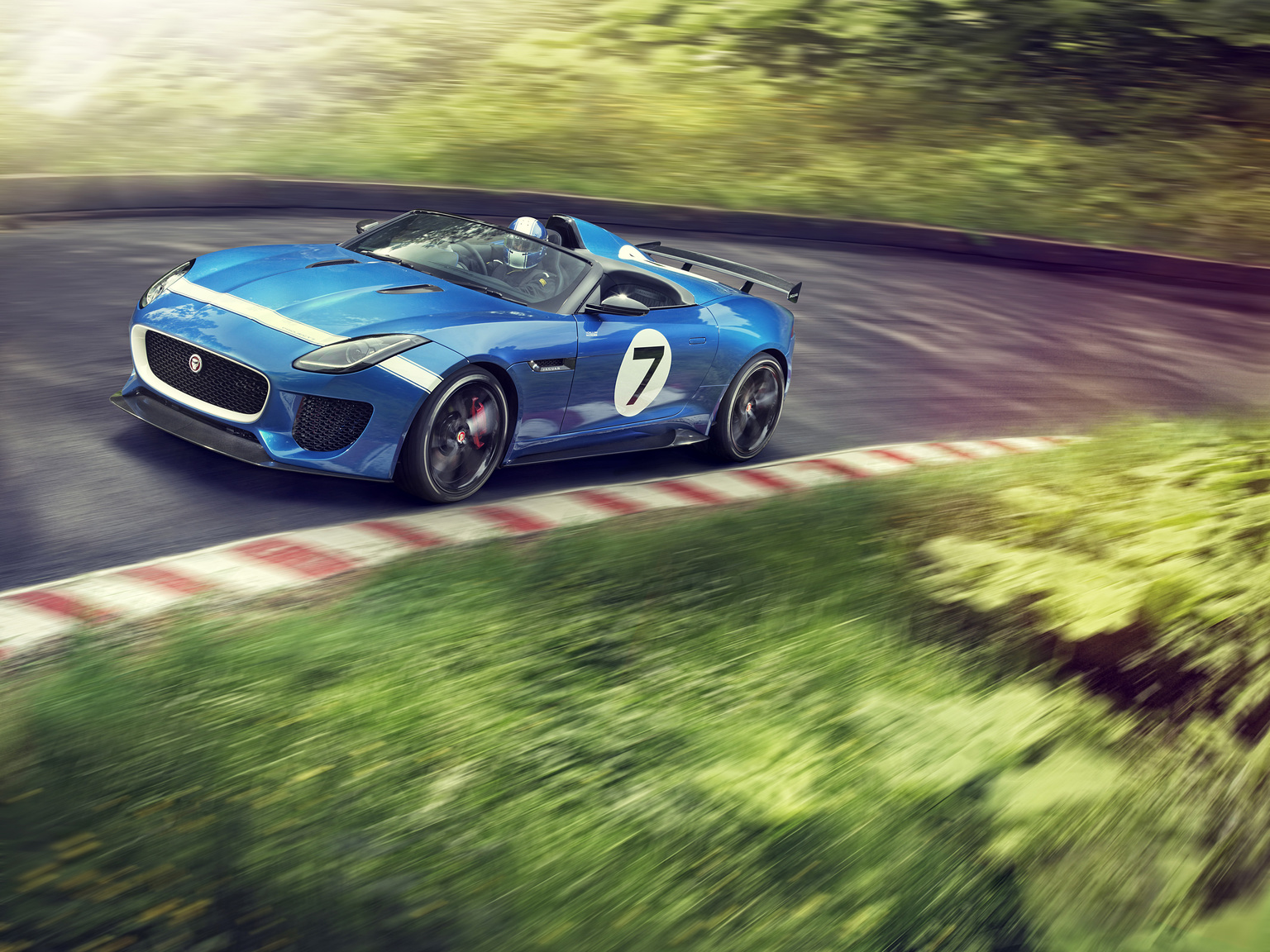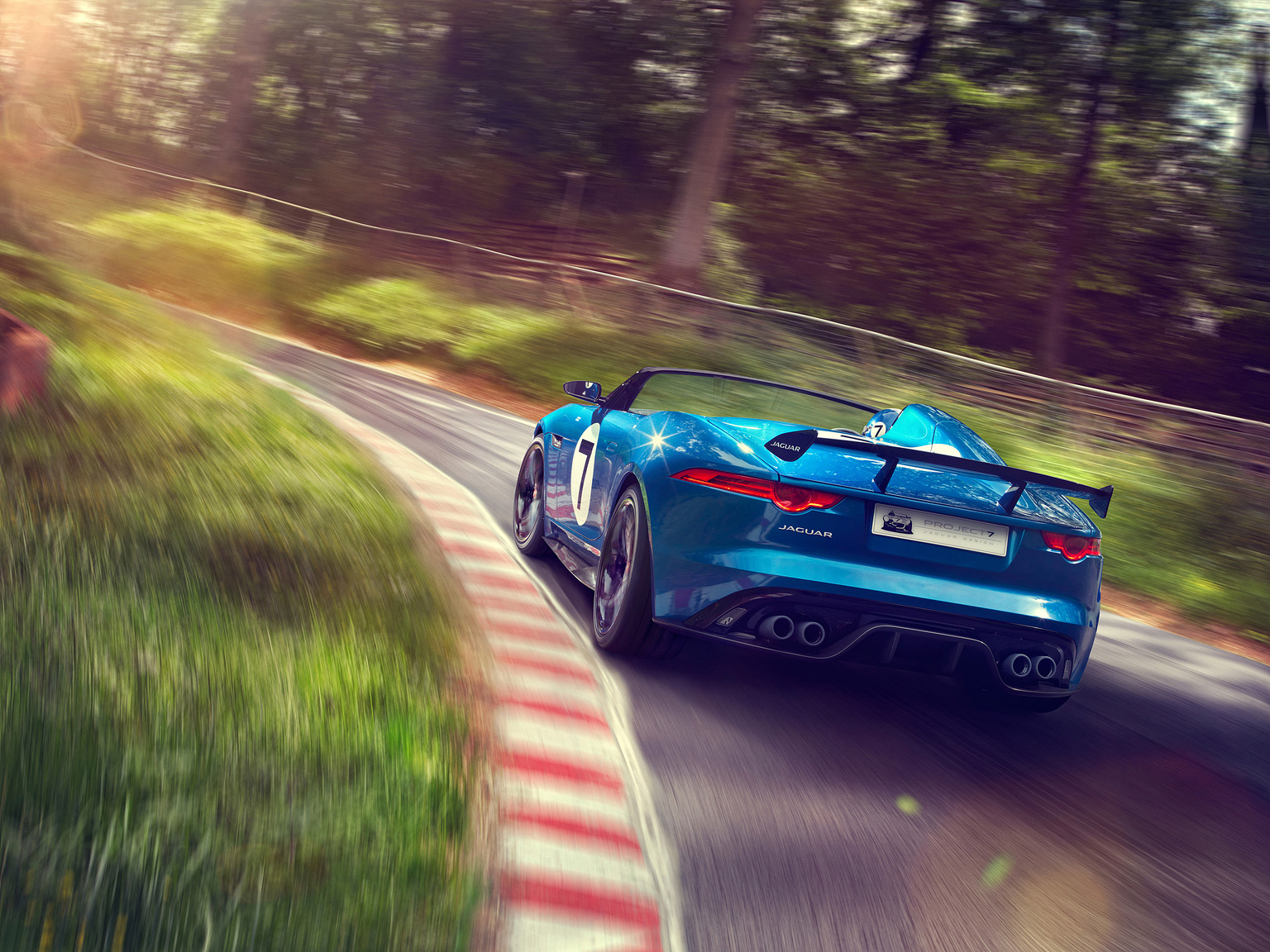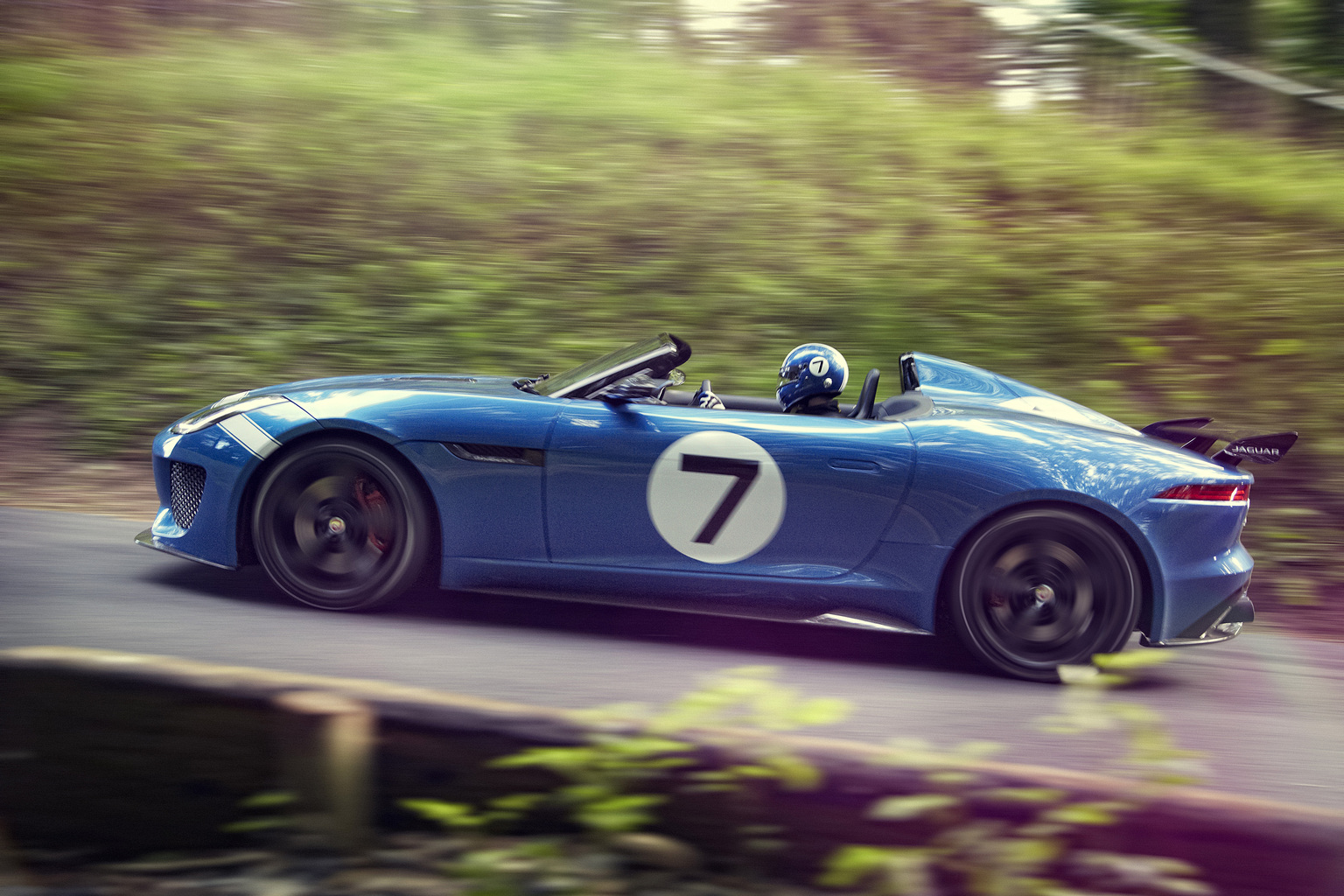2013 Jaguar Project 7
Jaguar’s Project 7 concept will make a dynamic debut at the 2013 Goodwood Festival of Speed on 12th July. Project 7 is based on Jaguar’s acclaimed F-TYPE, its all-new, two-seater, convertible sports car and winner of the World Car Design of the Year 2013 award.
Key exterior design changes include a fairing behind the driver’s head; bespoke carbon-fibre components – a new front splitter, side skirts and rear diffuser; lowered windshield and restyled front bumper. Project 7’s unique interior features a composite single-seat with racing harness, a helmet holder and custom trim. Project 7’s name acknowledges Jaguar’s winning of Le Mans seven times between 1951-1990 – a record for a British manufacturer – and its blue paintwork is reminiscent of the victorious Jaguar D-types of 1956/1957.
Project 7 is not a static concept, but a fully-functional, high-performance sports car. The F-TYPE’s rigid all-aluminium architecture provides the perfect starting point, power coming from Jaguar’s 5.0-litre supercharged V8 engine in 550PS/680Nm form – an increase of 55PS and 55Nm over the F-TYPE V8 S.
“The overriding dynamic aim when developing F-TYPE was ensuring connected feel; it’s a true, driver-focused sports car; agile, immediate, fast and, of course, fun. Having achieved that for the road, Project 7 has given us a unique opportunity to go that little bit further. It’s visceral in every sense – its response, its sound and its sheer performance. I’m very much looking forward to driving it at Goodwood.”
Mike Cross, Chief Engineer, Vehicle Integrity,Jaguar
In addition to the increase in power – delivered to the rear wheels through Jaguar’s eight-speed Quickshift transmission and electronic active differential – Project 7 also features a free-flow exhaust system with a ceramic finish, 10mm lower ride height and a unique spring/damper tune.
“Jaguar’s sporting bloodline and innovative ambition are perfectly embodied by Project 7, both through its sensual design, and its shattering performance. Project 7’s Goodwood debut will provide a great stage to showcase the creativity of our design and engineering teams.”
Adrian Hallmark, Global Brand Director, Jaguar
Project 7: A story of passion
Under Director of Design, Ian Callum, who constantly challenges his team to push the boundaries of design, Project 7 went from being an experimental sketch by Jaguar designer Cesar Pieri to the track in just four months.
Bringing to bear his love for cars and motorsport, his passion for Jaguar’s heritage, and his familiarity with the F-TYPE, Pieri drew a single-seater sports car with a swooping profile, cut-down windscreen and race-inspired livery.
“When I saw this sketch of a low-screen, single-seat F-TYPE, I felt enthused by it and wanted to take it further. As designers, our very purpose is to disrupt – to turn the norm on its head and see if it still works – and here at Jaguar, we love to push the boundaries.
“As a team our challenge was to take this gem of an idea, work within the limitations of production feasibility, and create something worthwhile. So I encouraged Cesar and Alister Whelan, Chief Designer, Jaguar, to take it to the next stage and develop a workable concept, and with the support of key departments across the business, Project 7 was born.”
Ian Callum, Director of Design, Jaguar
Following digital modelling, a clay model of Project 7 was produced. With that signed off, and time before Goodwood short, Jaguar’s engineering team worked closely with the design team to ensure that the build stayed true to the concept.
For Project 7, the F-TYPE’s two key ‘heartlines’ remain, the most prominent change being the completely new, D-type-inspired, rear fairing section that incorporates a rollover hoop and swoops down from behind the driver’s head. The roof system has been completely removed.
Aerodynamic modifications include a carbon-fibre front splitter, side skirts, large rear diffuser and a fixed rear spoiler with a 14-degree angle of attack, giving Project 7 a low, unified, muscular stance. The side louvres and bonnet vents are also carbon-fibre, while the carbon-fibre and aluminium wing mirrors draw inspiration from those on Jaguar’s C-X16 sports car concept, from which F-TYPE is derived.
The windshield has been lowered, while a new nose design incorporates revised air intakes and headlights with gloss black surrounds instead of chrome. The car sits on 20-inch Blade forged-alloy wheels with carbon-fibre inserts.
The cockpit of Project 7 is no less impressive than its exterior. The driver sits in a composite bucket seat, lowered by 30mm, and is gripped by a four-point racing harness. The passenger seat is replaced by a unique helmet holder, which carries a custom-designed Project 7 helmet in matching blue paint and graphics, secured by its own harness.
The seat and the insides of the doors are finished in a quilted racing-style diamond pattern. There are carbon-fibre inserts on the console and SportShift lever, the start-stop button is gloss black and the steering wheel is equipped with machined aluminium paddles.
“When you look at this car, it has got an enormous amount of appeal. It’s just full of desire – you can see that its sole purpose is to be enjoyed. Project 7 is a very special car – not just because it’s a one-off, but because of its purity of purpose. It’s pure Jaguar.”
In Detail
| type | Concept / Prototype Car |
| released at | 2013 Goodwood Festival of Speed |
| production | 1 |
| engine | V8 |
| position | Front, Longitudinal |
| aspiration | Supercharged |
| valvetrain | DOHC, 4 Valves per Cyl |
| displacement | 5000 cc / 305.12 in³ |
| compression | 9.5:1 |
| power | 405 kw / 550 bhp @ 6500 rpm |
| specific output | 110.0 bhp per litre |
| bhp/weight | 330.33 bhp per tonne |
| torque | 680.6 nm / 502 ft lbs @ 2500 to 5500 rpm |
| body / frame | Aluminum Alloy Body over Aluminum Alloy Monocoque |
| driven wheels | RWD |
| wheel type | 20-inch Blade forged-alloy |
| front tires | 255/30/20 Pirelli P Zero |
| rear tires | 295/30/20 Pirelli P Zero |
| f suspension | Aluminium Double Wishbones |
| r suspension | Aluminium Double Wishbones |
| curb weight | 1665 kg / 3671 lbs |
| wheelbase | 2622 mm / 103.2 in |
| front track | 1585 mm / 62.4 in |
| rear track | 1627 mm / 64.1 in |
| length | 4470 mm / 176.0 in |
| width | 1923 mm / 75.7 in |
| height | 1319 mm / 51.9 in |
| transmission | ZF 8-Speed Automatic |
| final drive | 3.31:1 |


